Artistic direction: Steffen Ahrens and Grit Berkner
Norbertus Grammar School, Magdeburg
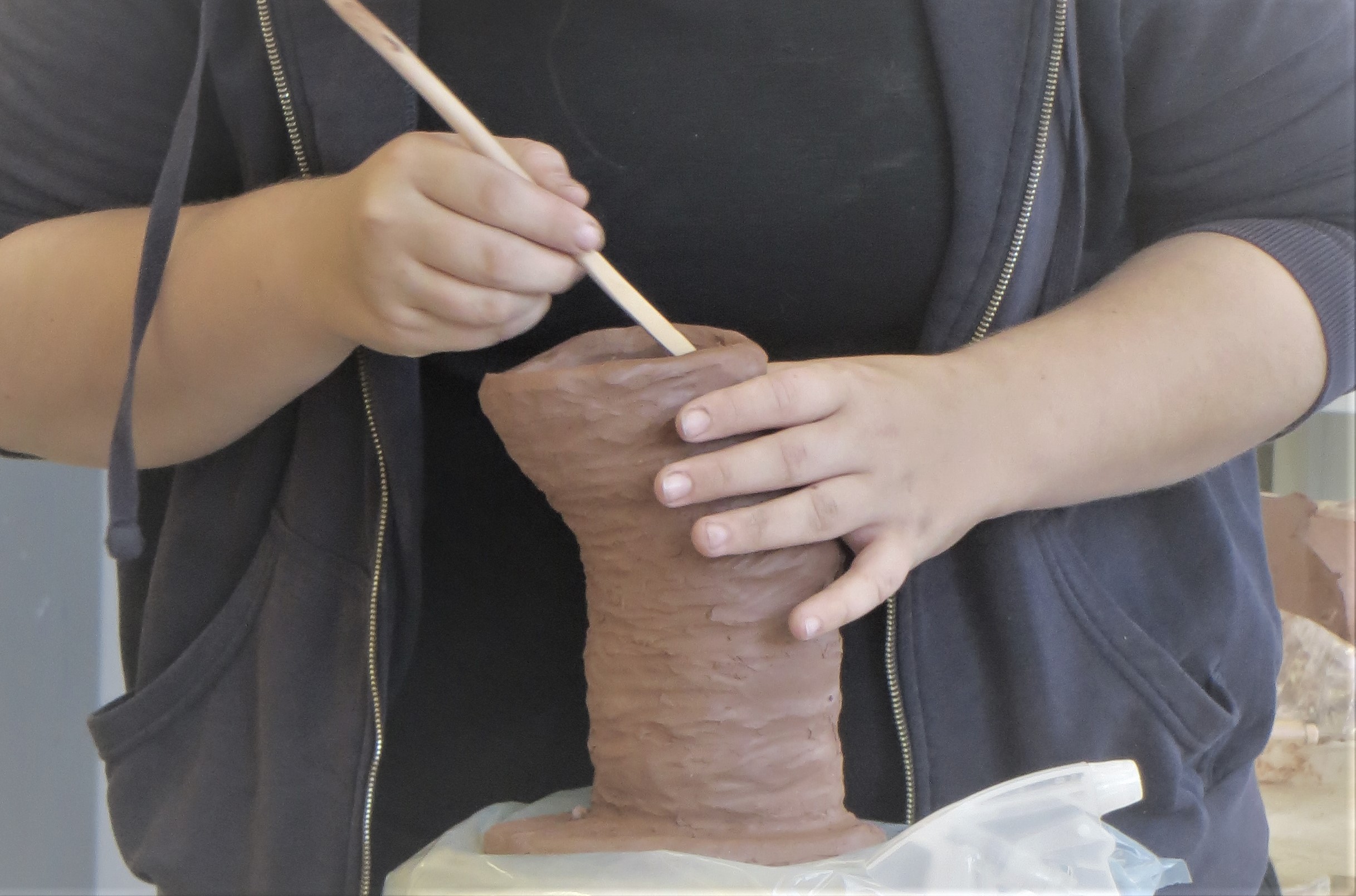
In the modeling course on the subject of “animals”, the main aim was to create larger objects out of clay, in which the children were asked to work intensively on ONE thing over a longer period of time and to focus in particular on shaping. This was a big challenge, as not all of the children had previous knowledge and different age groups were in the course together. Starting with finding the right animal, which offered enough variety of shapes, to patiently building a large hollow body that had to promise stability, to the many small details and subtleties at the end, all the children were able to produce a good result. All the children got involved in this long process and overcame many difficulties, as well as being motivated to further deepen the animal that they thought was already finished.
Artistic Director: Mareen Alburg Duncker
Förderschule „Astrid Lindgren“, Halle (Saale)
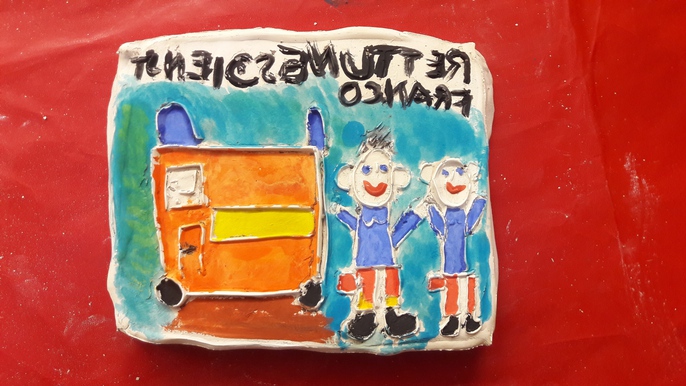
At the “Astrid Lindgren” special school, eight vocational school pupils were instructed in the production of a plaster relief on the subject of “ME and my world”. The pupils drew their first sketches on large sheets of paper. This resulted in colorful sketches of objects and people as well as self-portraits. The paper was then swapped for a clay surface on which the pupils could carve and print their pictures. A negative relief was created, which was filled with modeling plaster. After drying and cleaning, the finished relief panels were colored. In the second part of the project, small talismans or pendants were made using the sand casting process with molten pewter. With enormous patience and creativity, small unique pieces were created, which are proudly given as gifts and will certainly be worn for a long time.
Artistic direction: Claudia Baugut
Neues Städtisches Gymnasium, Halle (Saale)
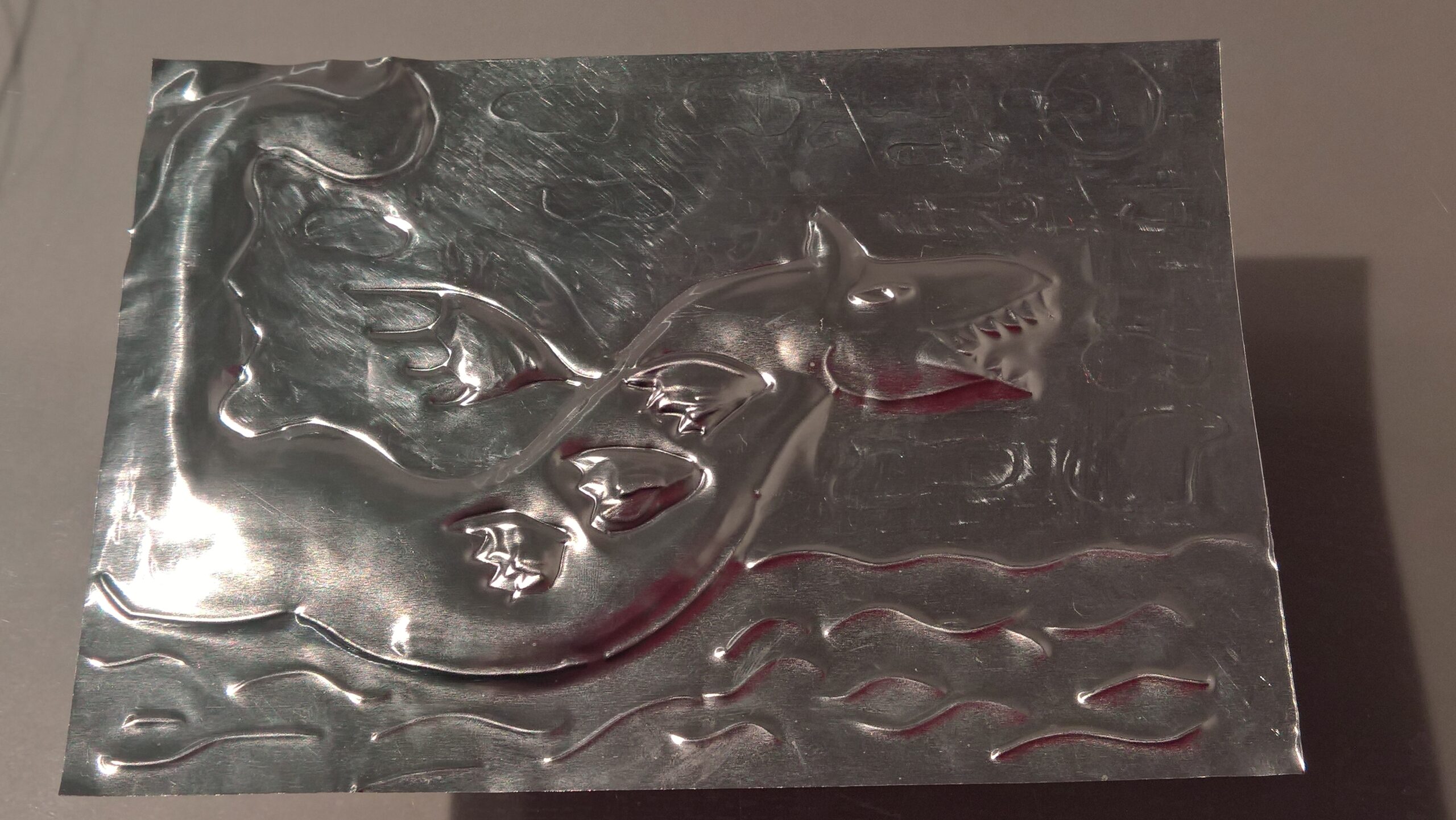
On the theme of “Imagination has no limits”, 26 pupils from a 5th grade class first explored the umbrella term “imagination” in drawings and chose their theme from various areas, e.g. nature and the environment, technology, science, flora and fauna, mythical creatures, aliens, dreamscapes, etc. They then transformed their ideas into a three-dimensional metal relief using various surfaces and styluses. Metal spinning into a foil is a complex technique that requires students to abstract shapes and develop a three-dimensional imagination. The aim was to create a group work and combine the individual A6 formats into a large metal picture. The work now hangs in their own classroom and can be viewed and reflected on at any time.
Artistic direction: Michela Benedan
Rainbow School Landsberg
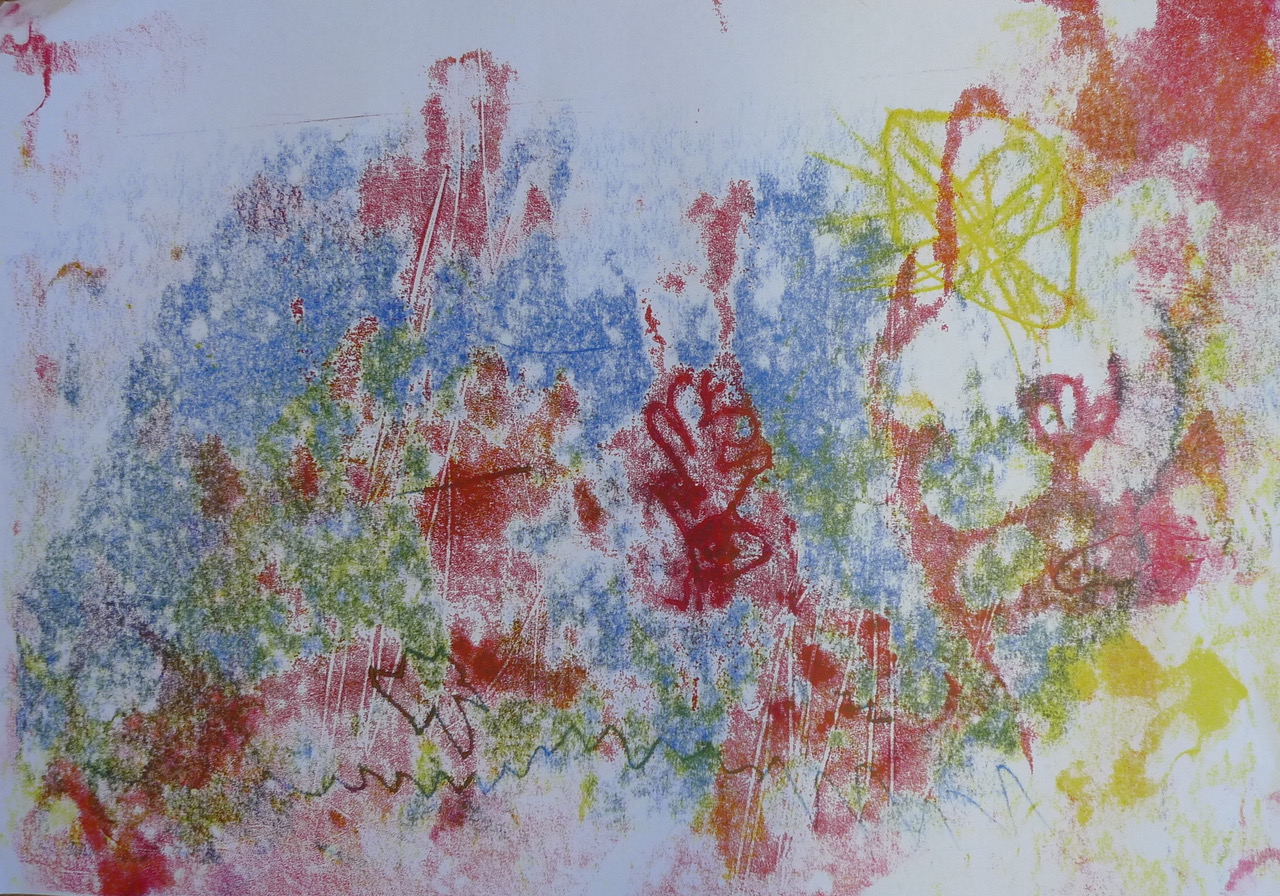
The project explored printing techniques, in particular the monotype. The children drew intensively and were very curious and keen to experiment. They were able to try out a lot in the project, gain their own experience and work freely. The topic was just an occasion and the children were easily able to detach themselves from it. In an individual process, the aim was to enable the pupils to express themselves artistically; the results were of secondary importance.
Artistic direction: Christiane Budig
Hohenthurm elementary school
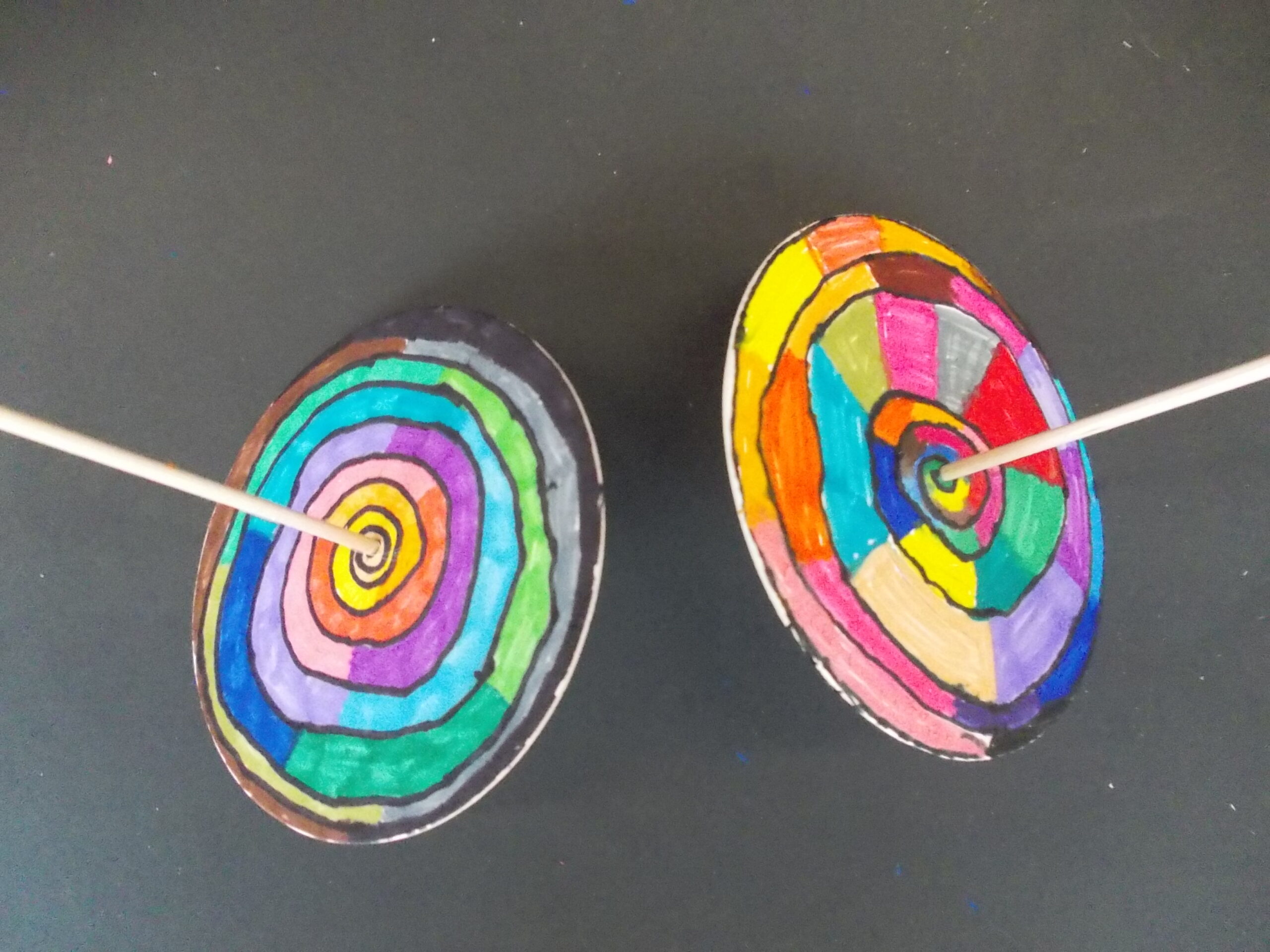
“Everything rotates – painting in motion” – centrifugal force – the pupils explored this phenomenon artistically. They let gouache colors fly, which mixed, and used them to make spinning tops. The aim of this art project was to stimulate the imagination through free and experimental design with color. The pupils also tried out consciously mixing the primary colors by placing them next to each other in the spinning top, which only begin to mix when they move. Many smaller, but also plate-sized spinning tops were created, which drew traces in the middle with a colored pencil while spinning. A new experiment began…
Artistic direction: Harriet Bünning
Borlach elementary school, Bad Dürrenberg
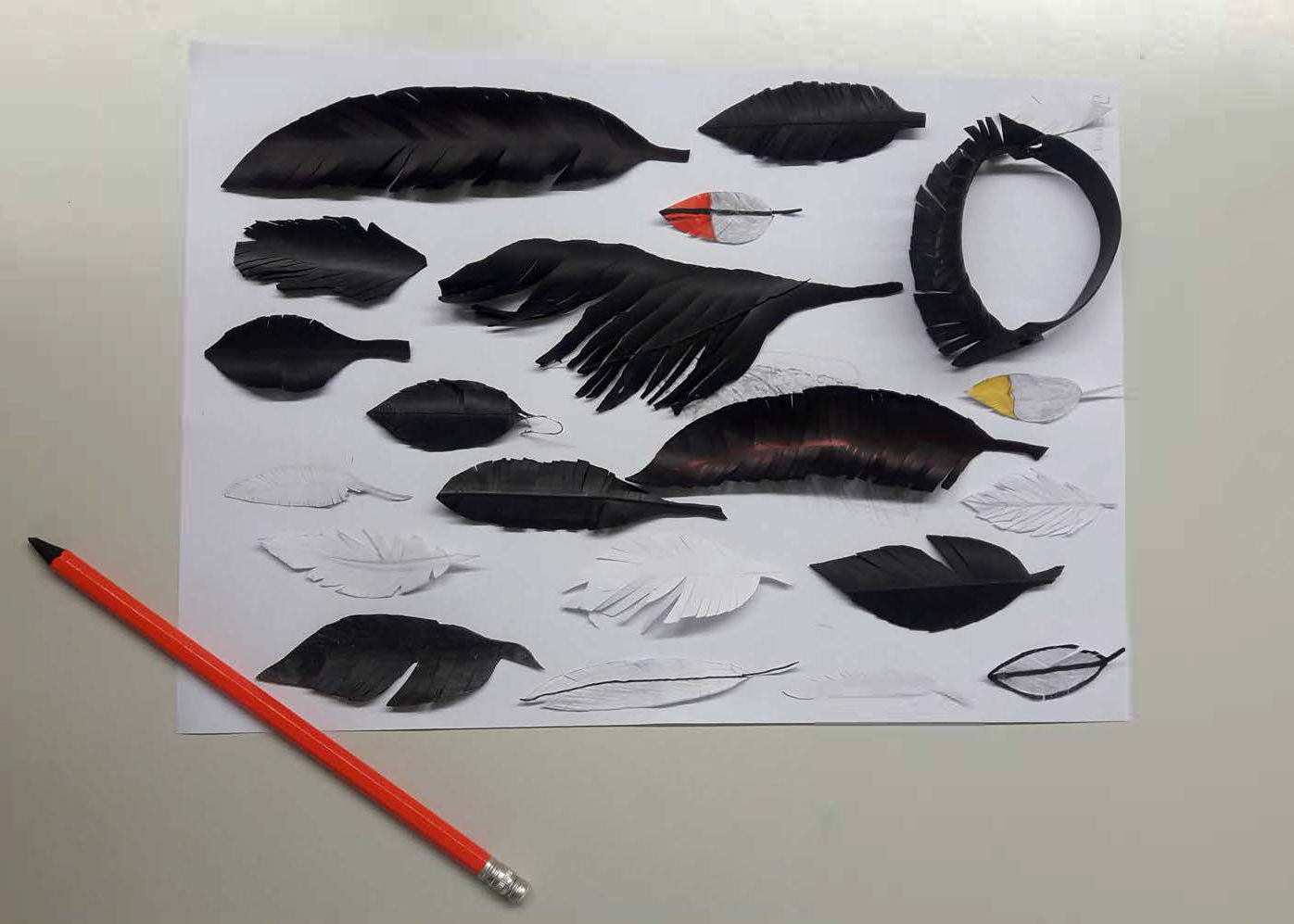
The starting point for our project was the material, which consisted of old, discarded bicycle inner tubes. This would result in jewelry. The pupils were asked to take inspiration from bird feathers and reinterpret them. The bird feather has a filigree structure. The lines of the spring had to be recognized and implemented in bicycle tube rubber with a view to simplification. The pupils’ fine motor skills were put to the test. The rubber had to be cut precisely with the scissors while observing the fine lines. The students’ works impressively show their own interpretations of the theme.
Artistic direction: Anne Deuter
Beendorf elementary school
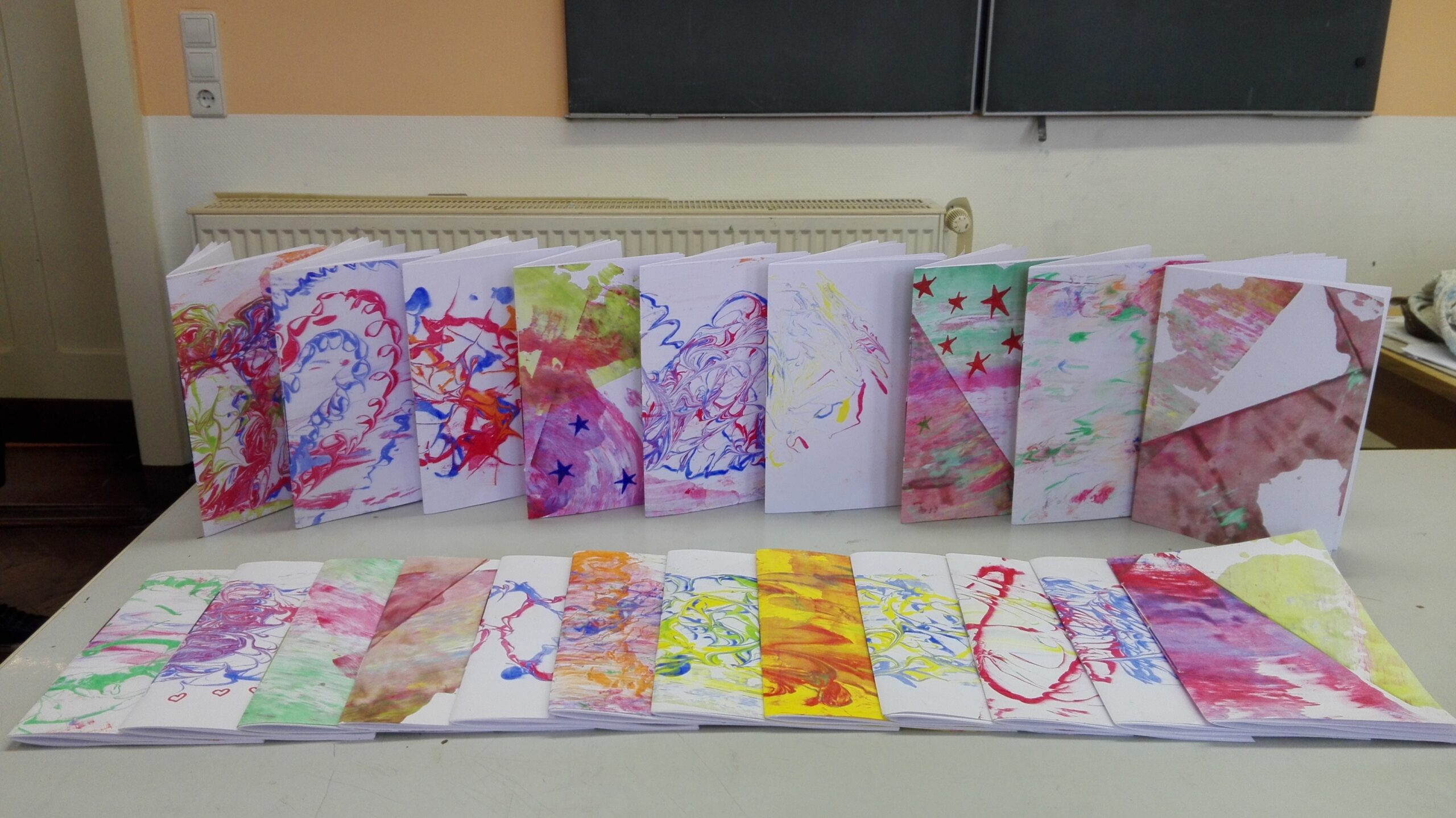
The medium of the book seems so familiar to us – whether at school, in the living room or in our own room, in libraries… The artist’s book, a form of work in the visual arts, is rather little known. An artist’s book is a book that is conceived, designed, produced and often distributed by an artist. An artist’s book is an independent work. In the elementary school in Beendorf, classes two to four explored the book room, the two sides of the paper and how a dramaturgy can be developed through their order and arrangement. Along the way, they learned a simple bookbinding technique and created a small work of art with a unique character. The cover paper of each booklet was designed using the marbling technique. The super special at the end of each day was experimenting with solar paper.
Artistic direction: Beate Gödecke
Hans Christian Andersen” elementary school, Halle (Saale)
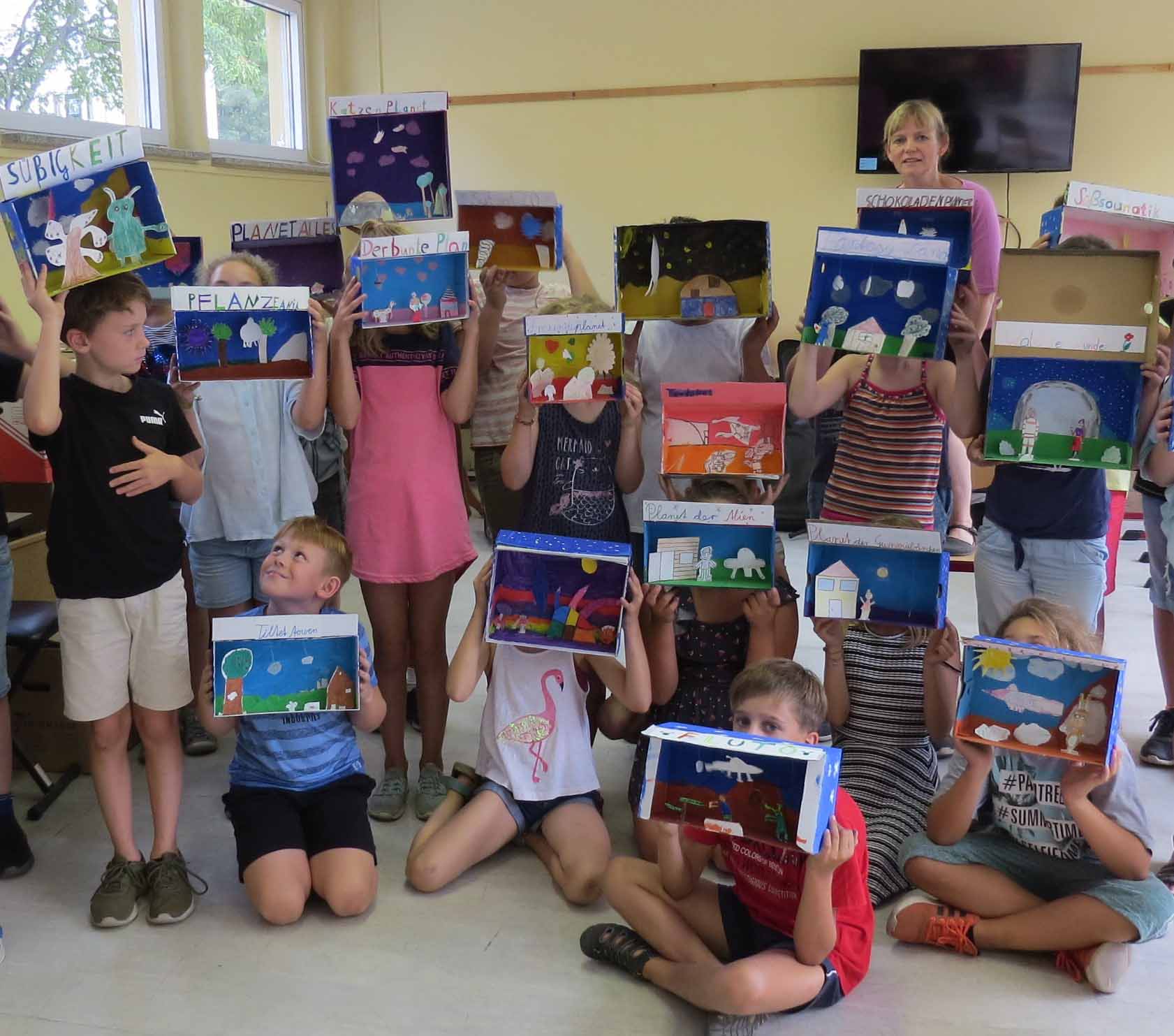
Under the title “My country on the planet Phantadu”, 18 4th grade pupils created an assemblage (showcase). After an imaginary journey to their country together, the children recorded what they had experienced, first in writing and then in a drawing. They then painted the inside and outside walls of a shoebox in the shape of the fantasy landscape or the universe. They first drew details such as rocks, plants, rockets, inhabitants or themselves on drawing cardboard before sticking them into the fantasy landscape or hanging them on strings. At the end of the project, the pupils proudly held the fantasy worlds they had imagined and designed in their hands.
Artistic direction: Sebastian Harwardt
Sekundarschule „Albrecht Dürer“, Merseburg
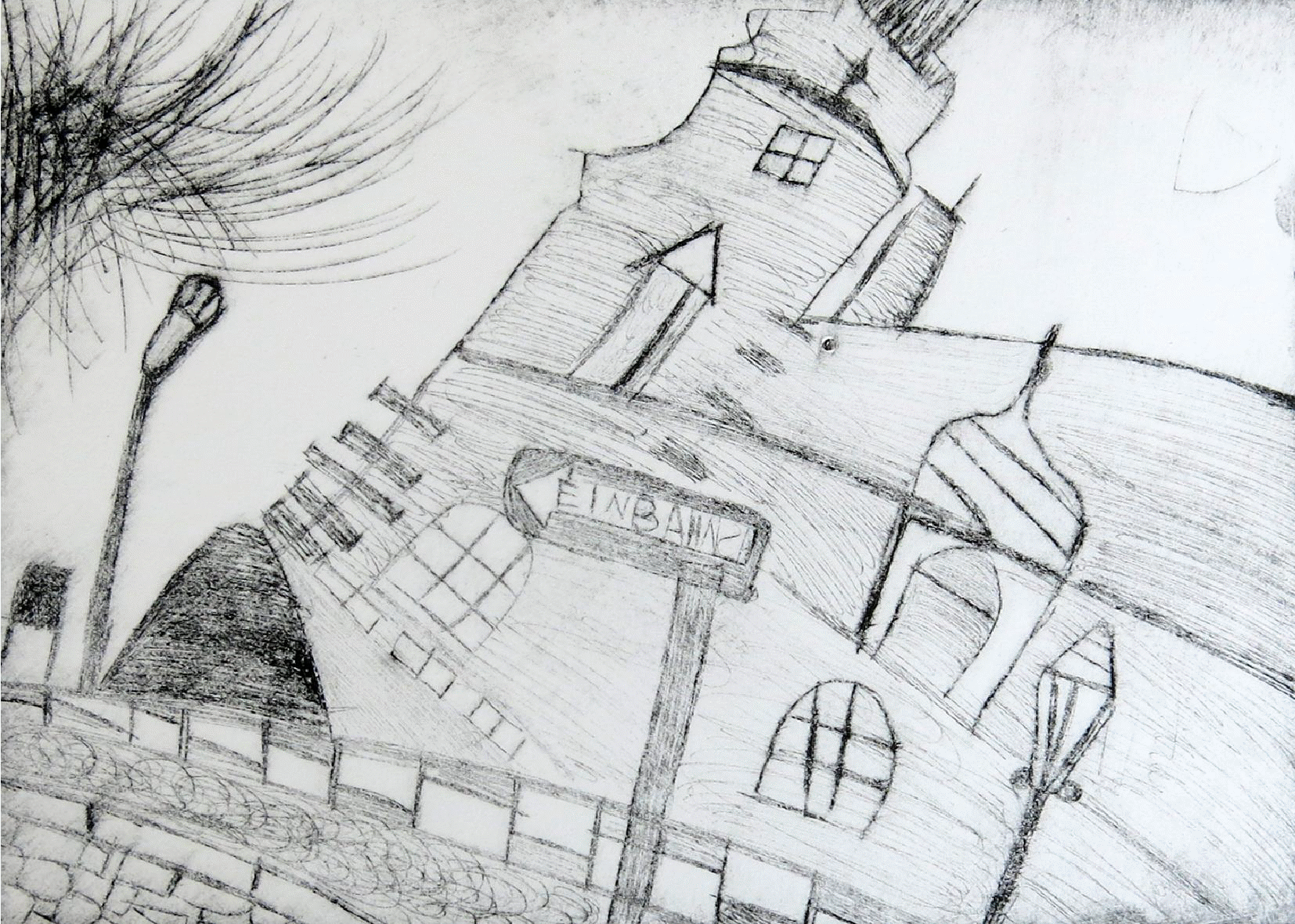
“The Ständehaus in Merseburg” – A drypoint course under the direction of Sebastian Harwardt was realized at the Merseburg secondary school “Albrecht Dürer”. 21 pupils from an eighth grade took part. The content of the project was the artistic realization of the Merseburg Ständehaus. Beforehand, the students collected impressions and photos of the building and its details. During the course, they drew these directly onto a plastic plate, scribed the result and printed several sheets.
Artistic direction: Carola Helbing-Erben
Elementary school Ostrau
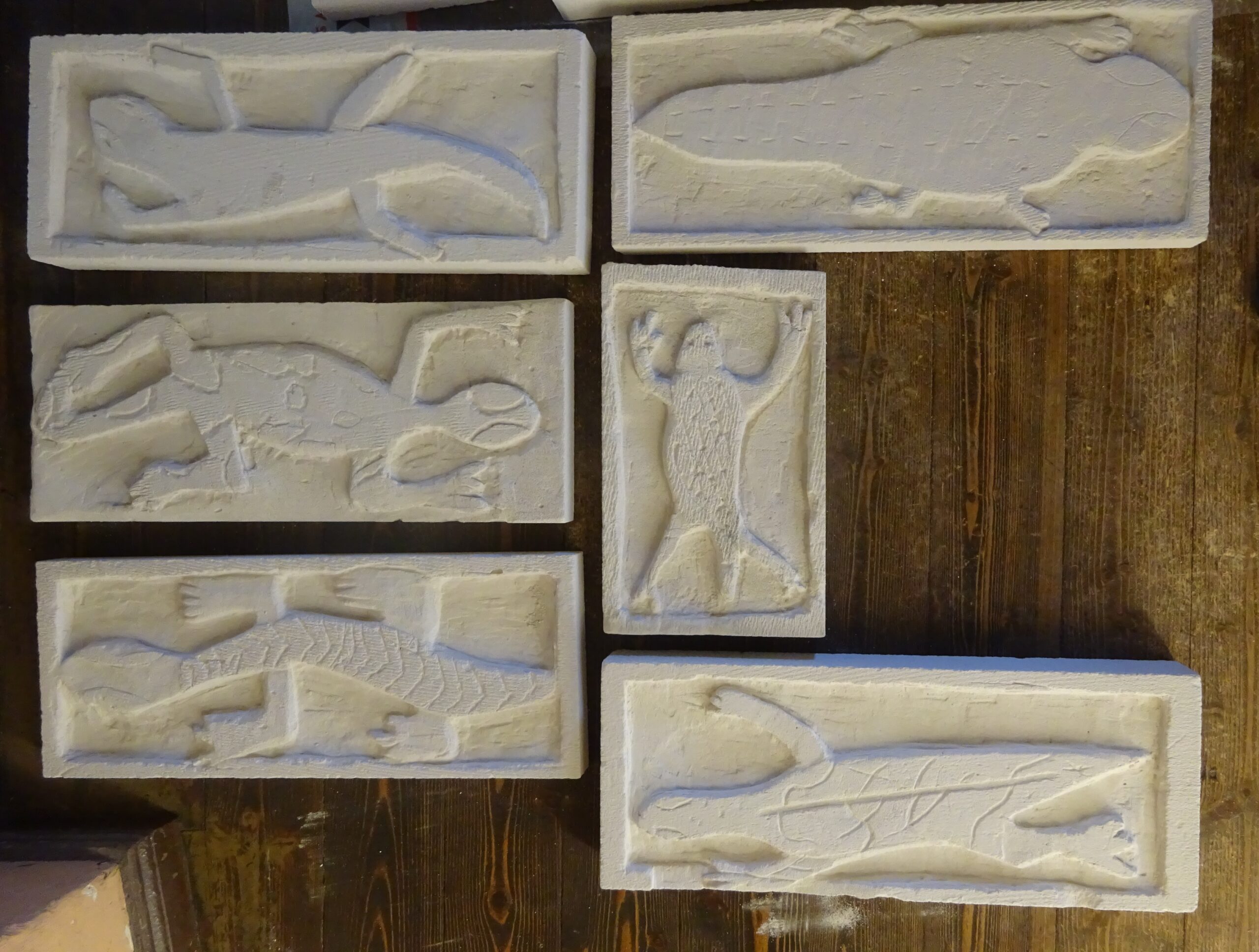
“Relief – newts, amphibians, frogs and plant tendrils” After a theoretical introduction to the topics of relief as an art form, bas-relief, low-relief and high-relief as well as insights into art-historical considerations, 22 pupils in Year 4 created reliefs from porcelain stoneware in various sizes. At the beginning there was material science with preliminary exercises and instructions on how to use the tools. Each student also created a workbook with short summaries. Thematically and in terms of content, a reference was made to the threat to species from environmental change and specifically to the park in Ostrau. Formal questions such as contrasts, basic proportions of the figure and surface design were clarified and finally all the works were evaluated.
Artistic direction: Holtrud Henze
Osternienburg elementary school
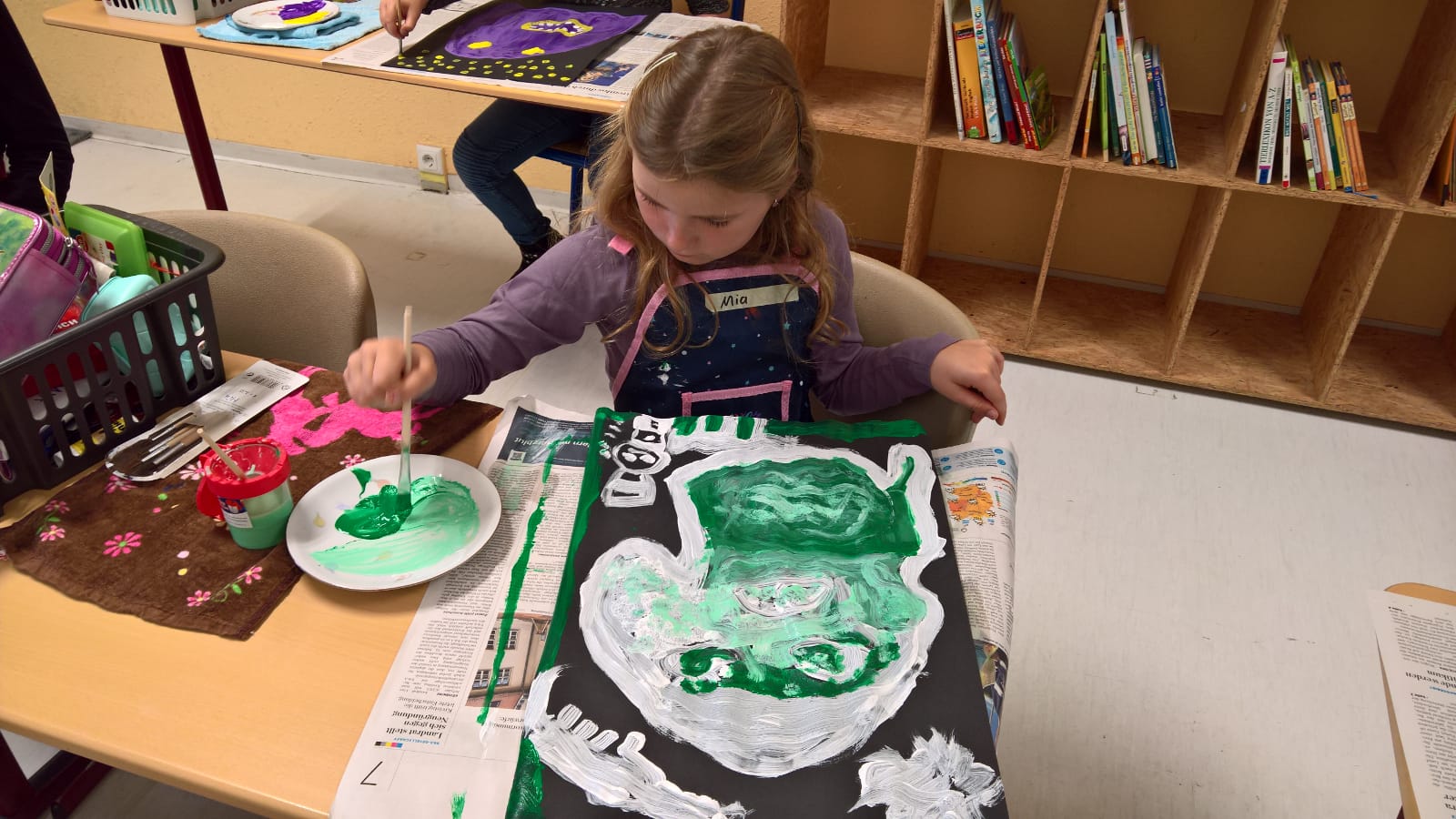
“The color spirits and the colors of the seasons”
During the project, the children learned about colors and their laws through play. Starting with their favorite color, the students painted their color ghosts on a black background. The months of the year and the corresponding colors were the themes for further pictures. The children were able to experiment with different paint application techniques such as blowing, dabbing, dripping and printing and use the surprising effects and possibilities for their pictures.
Artistic direction: Anna Herbert and Josefine Cyranka
Johann Wolfgang von Goethe” secondary school, Ilsenburg
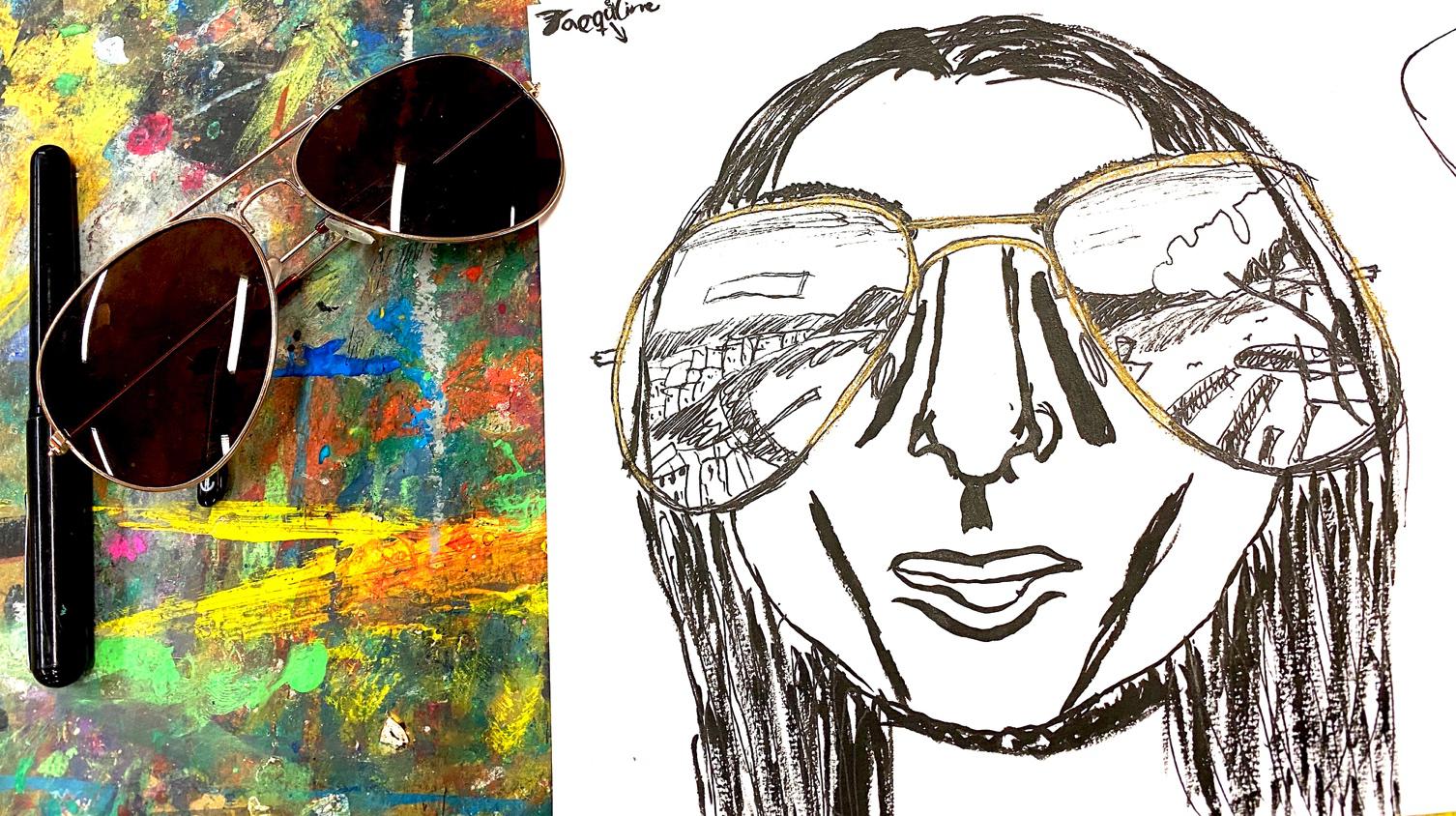
“Travel diary – Inspirazione Goethe”: 20 pupils from grades 6-10 at the “Johann Wolfgang von Goethe” secondary school in Ilsenburg traveled to Italy in the middle of January! An espresso in the morning, lime ice cream at lunchtime, sunglasses and opera music and our senses were transported to the sunny south. Under the guidance of Josefine Cyranka and Anna Herbert, the pupils filled their travel diary with still lifes, landscape watercolors and collages based on photographic templates to create a mixture of memory, imagination and reality. Bound in old maps as a ring binder, everything was perfect for the return journey.
Artistic direction: Silke Hönig
Gotthold Ephraim Lessing” elementary school, Halle (Saale)
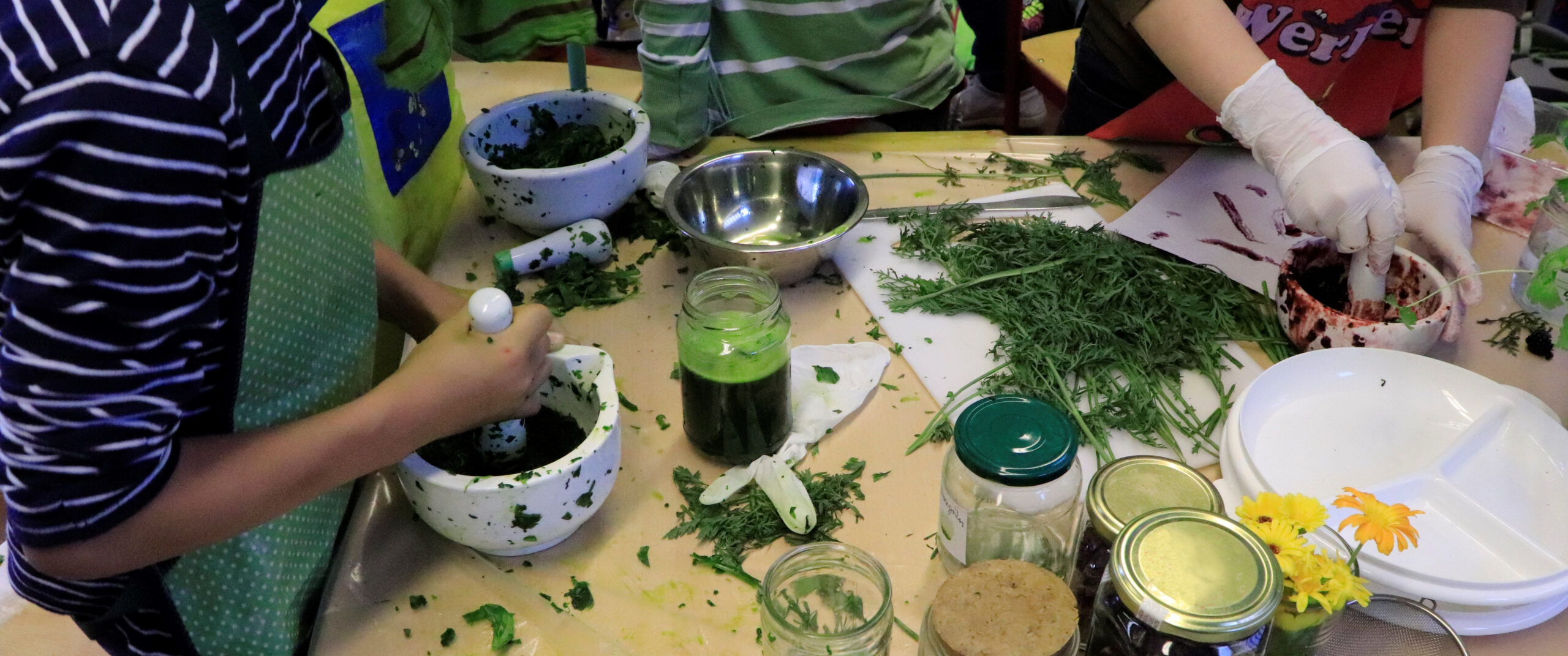
“Plant color workshop” – In 5 project days, 23 students from the 2. and 3rd class into the long tradition of the artistic use of plant colors. Using plants that were available seasonally, the pupils were taught how to sustainably produce and preserve paint. They learned about the coloring properties of well-known flowers, vegetables, fruits and herbs. It was boiled, cut, grated, grated, the color juice squeezed out and turned into watercolors and preserved as pezzetti and pigments. Brushes were also made from natural materials. The artistic-experimental application of various painting techniques, plant printing and collage with colored tissue paper gave room for imagination and creativity. Each student put their prints, paintings and collages together to create their own booklet, which was bound with thread using plant-dyed wool threads.
Artistic direction:
Katja Jaroschewski and Sarah Bartmann
Salbke” elementary school, Magdeburg
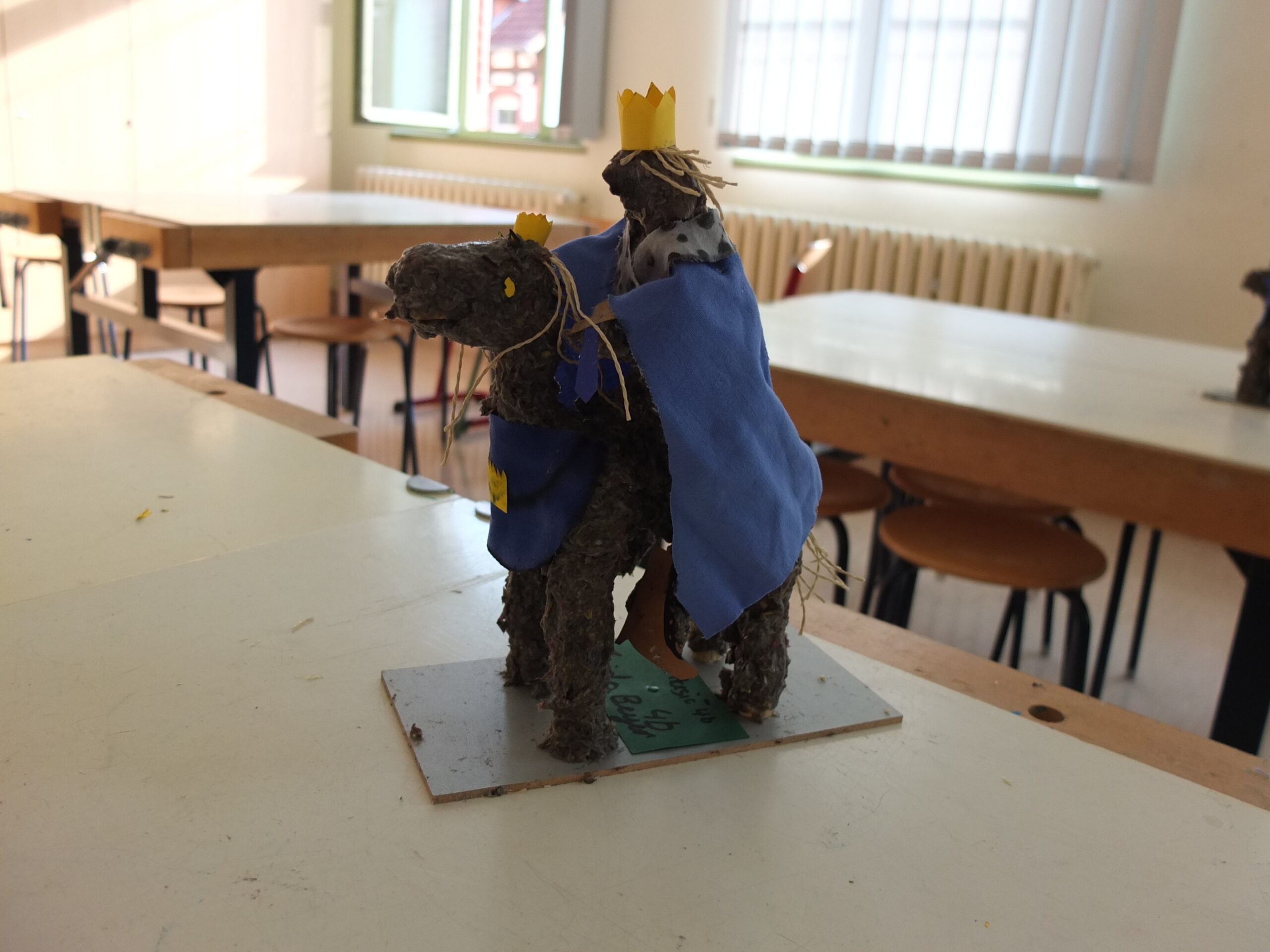
During the school project entitled “The Magdeburg Rider”, the children of the 3. and The 4th grade of the Salbke elementary school made the connection to the city of Magdeburg and created a sculptural equestrian statue. This gave them the opportunity to engage with the cultural assets of their surroundings. The Magdeburg Horseman depicts Emperor Otto I, one of the city’s most important personalities. A copy of the equestrian statue can be found on the Alter Markt in the city center. Due to this exposed location, it can be assumed that the monument can be seen by everyone. Using the materials provided – wood, wire, papier-mâché, paper and fabric – the pupils were able to create a small, individual equestrian statue.
Artistic direction: Juliette Kolberg
St. Franziskus” elementary school, Halle (Saale)
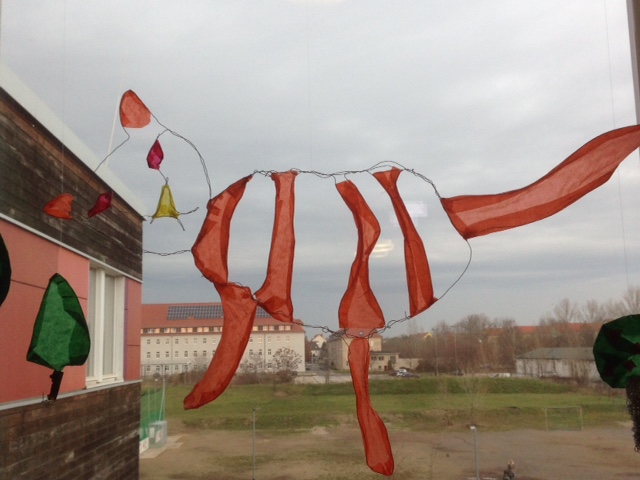
“inside-outside” – 25 third-grade pupils from St. Franziskus elementary school in Halle took part in this project, which focused on exploring perception from different perspectives on the one hand and familiarizing themselves with new materials on the other.
Artistic direction: Katja Labedzki
Bildungsmanufaktur Halle (“Riesenklein”), Halle (Saale)
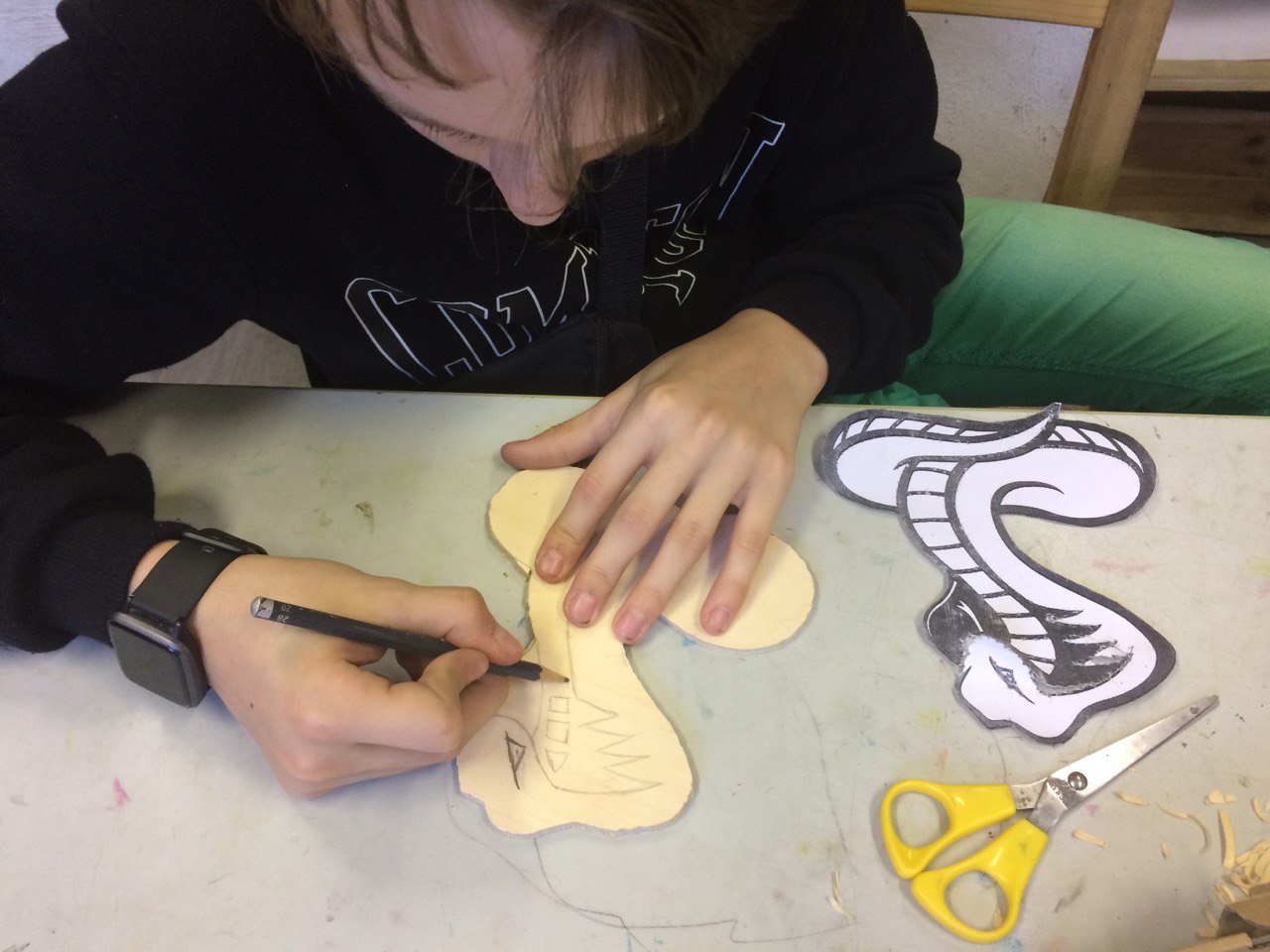
Pupils in grades 5 to 11 with and without an inclusion background took part in the “Riesenklein” project. After a brief theoretical introduction to the history and technique of woodcutting, ideas were collected and motifs developed. They started with simple shapes that were sawed out of soft Japanese plywood using fretsaws or simple impressions were made from discarded breakfast boards or the remains of fretwork. The students were able to use the glazing properties of the letterpress ink, experiment with overlapping shapes and color areas as well as with positive and negative printing and were thus able to achieve a wide variety of effects with one motif. During the workshop week, the children were given the opportunity to work out their motifs with wooden paring knives and to combine images and text with letters from the school print shop. The results were broadsheets, maps, posters and also designed sketchbooks.
Artistic direction: Ilka Leukefeld
Maria Montessori Free Primary School, Gröningen
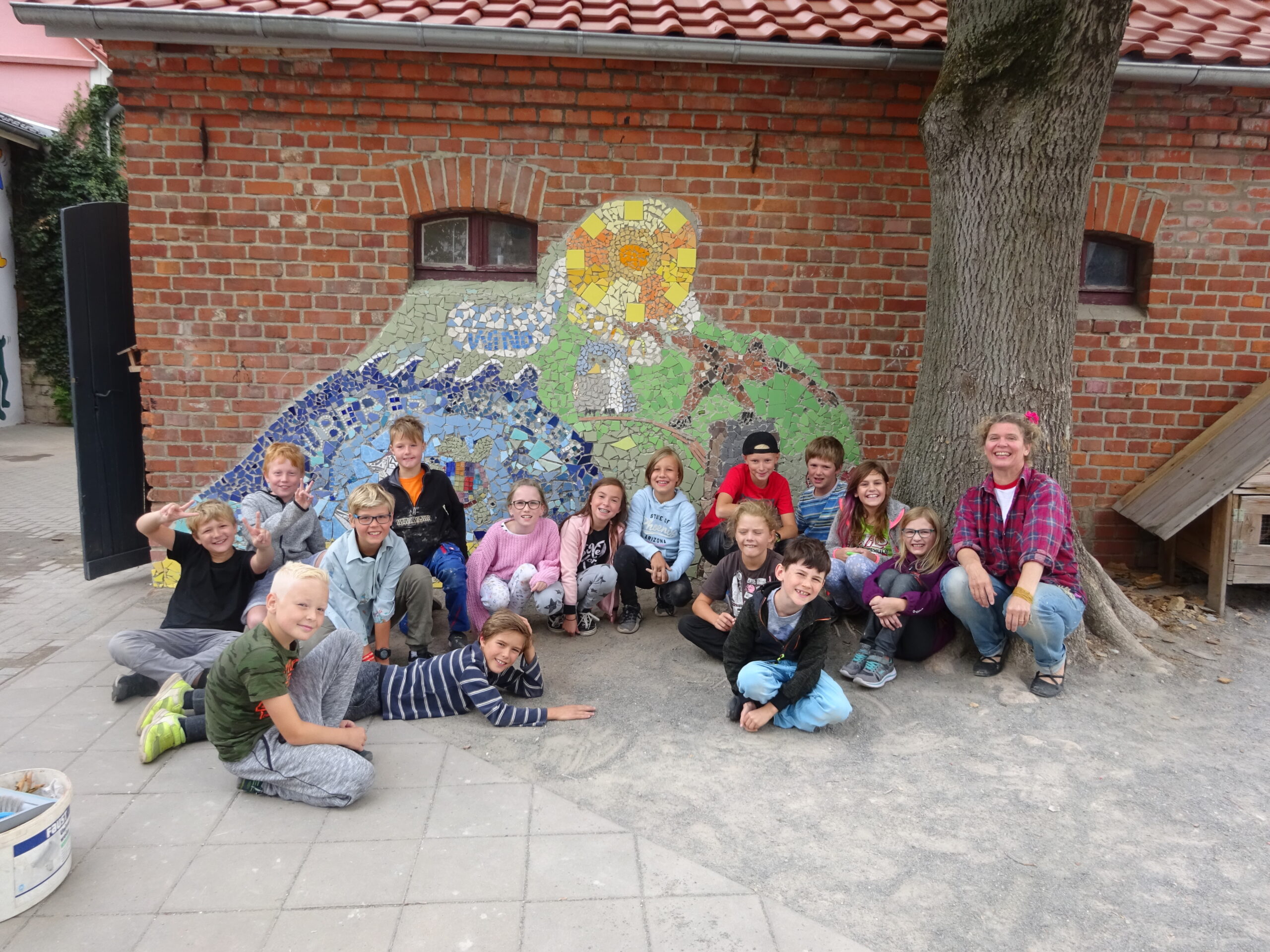
“Art on the shed – mosaic”: The project began with an assessment of the area to be designed on the back wall of the shed and a rough measurement of the surface. The conversation gave rise to the idea of incorporating the topic of environmental protection and climate change into the upcoming work. Sketches were drawn, viewed and discussed and together we chose which motifs should be included in our wall design, which were then first drawn on paper in their original size. The children then began to pick out suitable pieces from the tile remnants they had brought with them, cut them up if necessary and then put the element together from the pieces. It didn’t take long for the fish to be laid out. Gradually, the other motifs were also created. The space on the wall was divided up well, all the elements were marked out and gluing soon began, until only the gaps needed to be filled on the last day.
Artistic direction: Ilka Leukefeld
Anne Frank” elementary school, Halberstadt
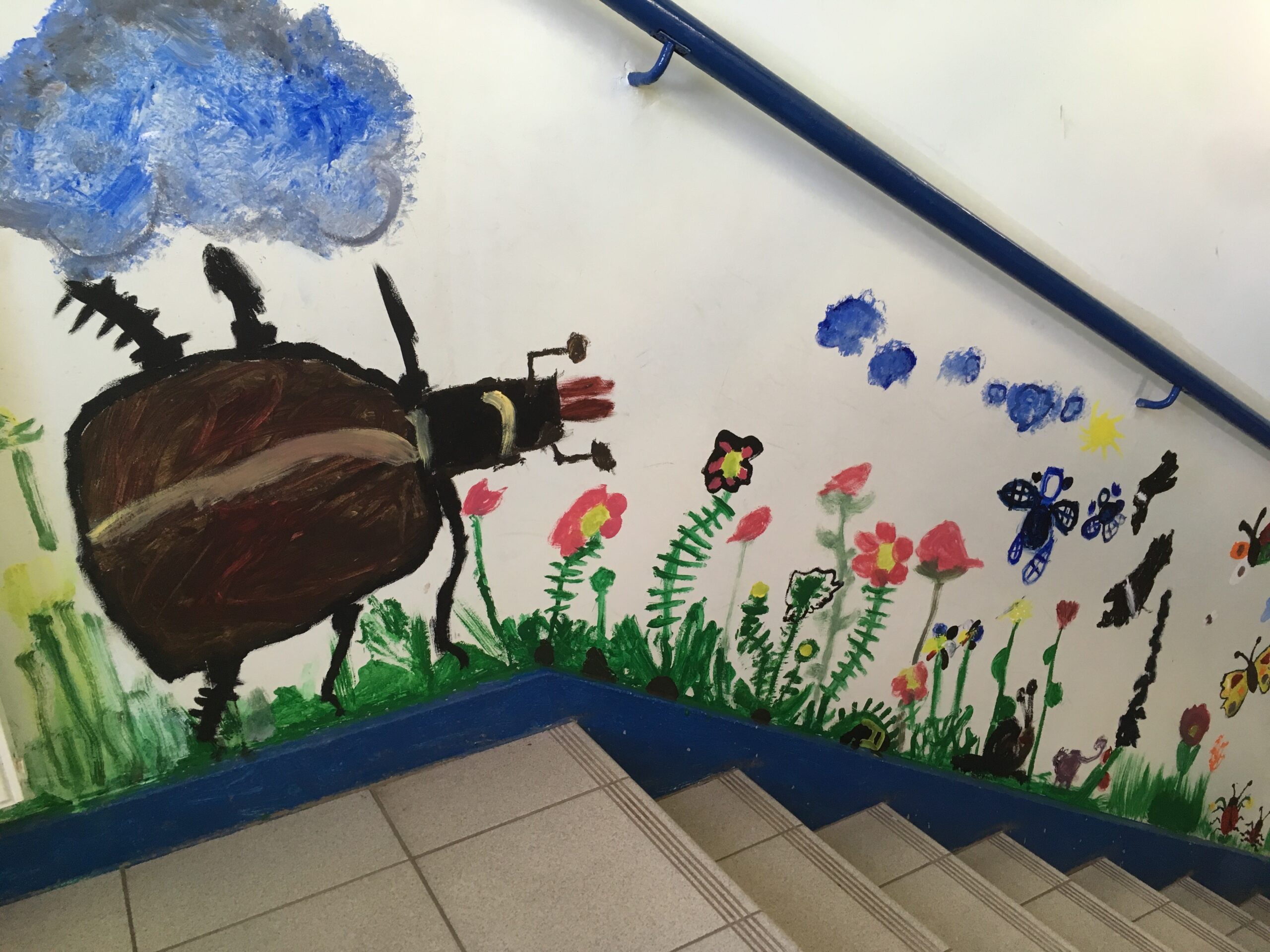
“Our meadow”: We use it every day for walks, to walk the dog, to play games, to romp around or to have a picnic in the countryside, but most people are completely surprised when they find out how much life is bustling above, on and under their meadows! Under the guidance of Ilka Leukefeld, the children made their own brushes and beautiful paints from eggs, vinegar and various plants (egg tempera). An attempt was made to arouse the children’s interest in species-rich flora and fauna and environmental protection. The paints produced were first used to paint samples on paper, then animals and plants from our region were painted directly onto the walls in the stairwell.
Artistic direction: Annekatrin Müller
Borlach Community School, Bad Dürrenberg
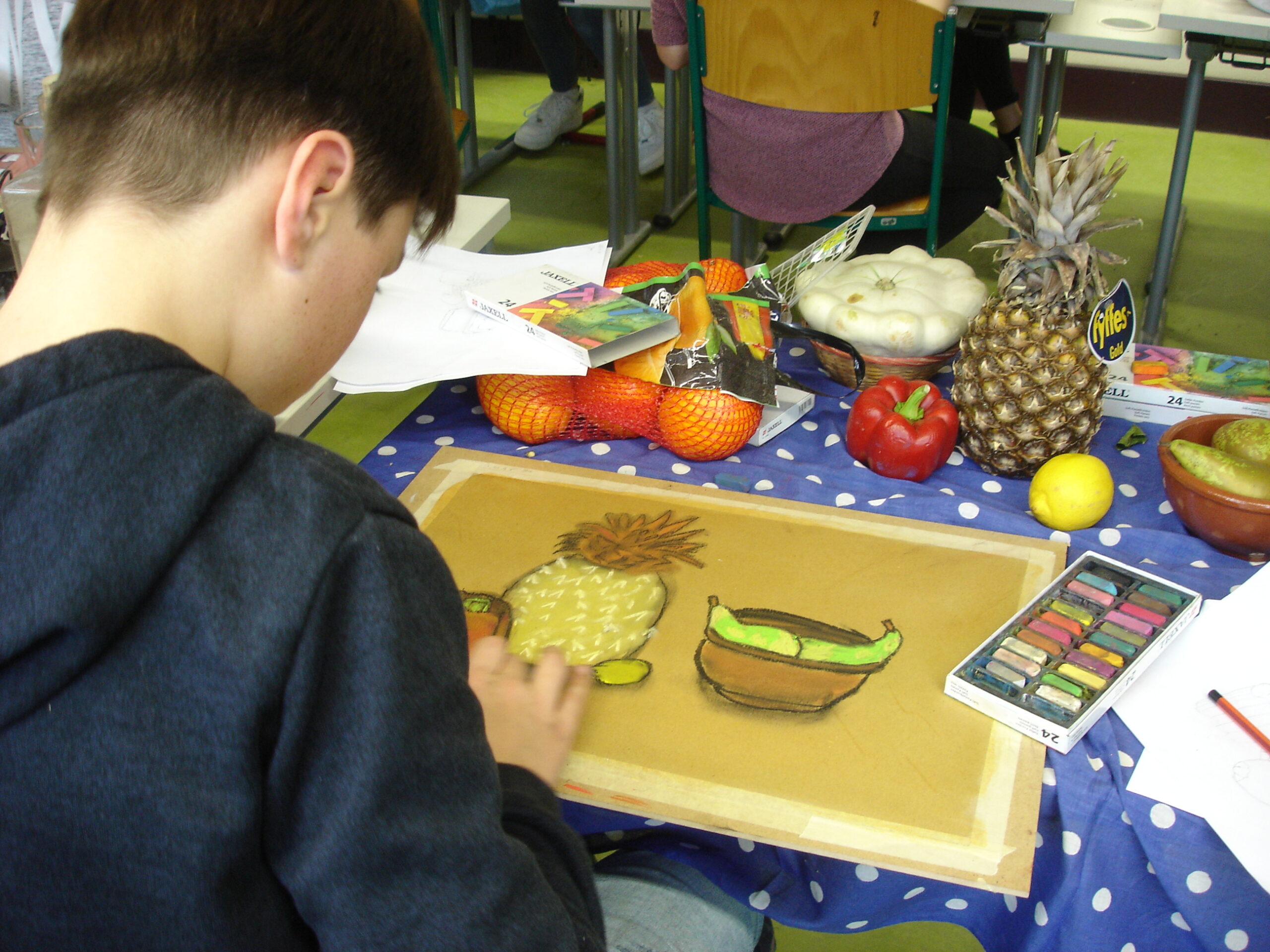
The project was carried out with 57 pupils in year 8 at the Borlach Community School in Bad Dürrenberg. After a short introduction to pastel painting, a still life was to be constructed and realized using the pastel technique. The composition of the picture was discussed on the basis of sketches. He then began painting in a linear fashion with charcoal and chalk on the painting grounds. Later, colored chalks were added, with which special effects could be achieved on the prefabricated painting grounds.
Artistic direction: Elfi Nitze
Erich Kästner” elementary school, Haldensleben
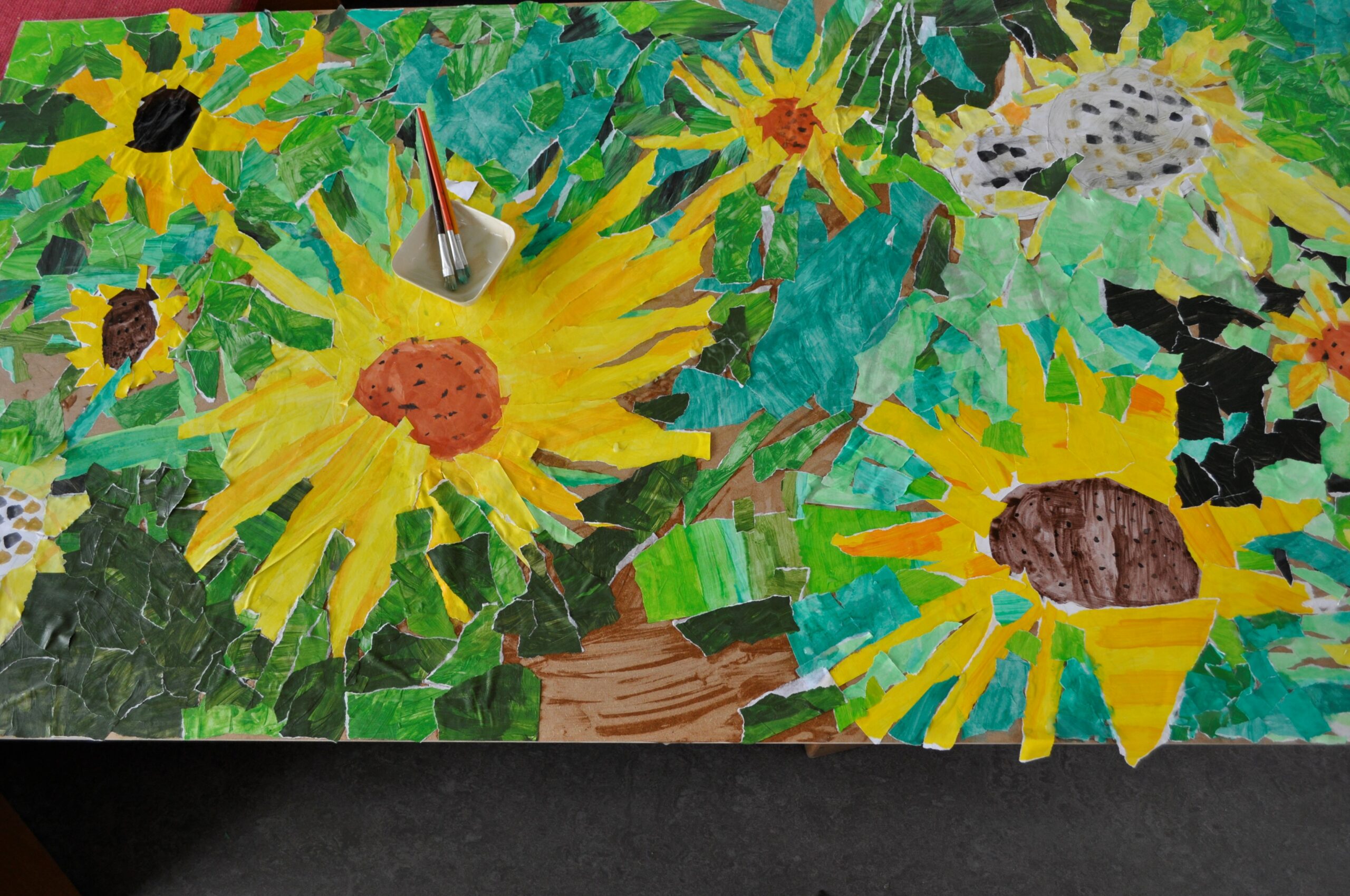
“Cunning thing”: Elfi Nitze led an art project with pupils from the Erich Kästner elementary school in Haldensleben. 3. and 4th grade in painting and collage. The basic idea was to create a large sunflower picture together to decorate the entrance to the school. First, the pupils looked at pictures of sunflowers to define the color of the picture. They then painted papers in various shades of yellow, brown and green. These were then torn and composed into sunflowers. The use of paste to connect the random patterns was particularly new for the pupils and was enthusiastically received. After completing the sunflowers, there was a joint agreement as to who would work on which part of the 150×160 cm wooden panel, as well as the final composition and distribution of the individual picture elements. When gluing the leaf structures in particular, the pupils learned about the depth effect by using different shades of green.
Artistic direction: Karl Oppermann
Special school for physical and motor development “Marianne Buggenhagen”, Darlingerode
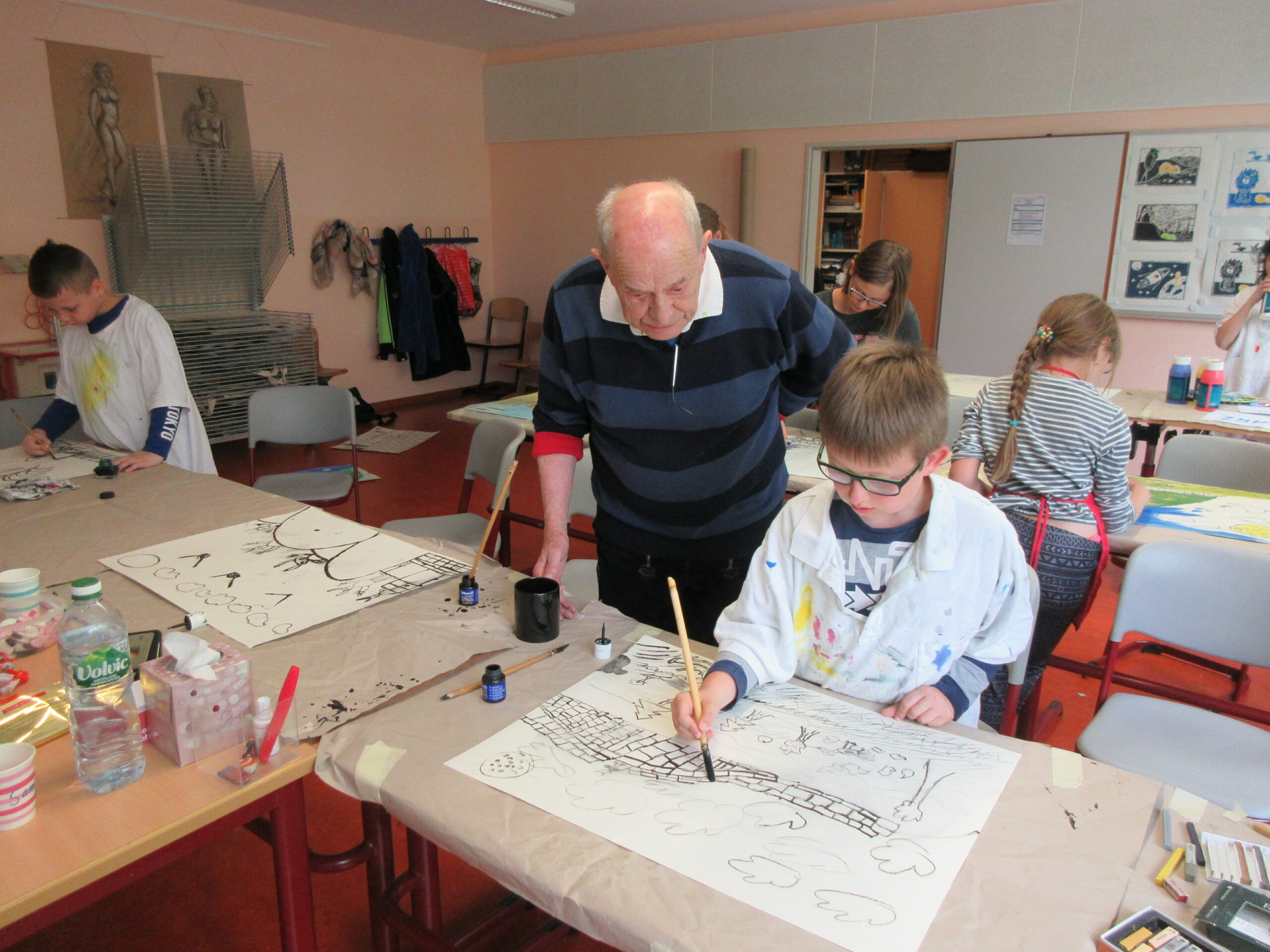
Parallel to last year’s theme “Typical Harz – Walpurgis”, twelve children interested in art interpreted the Harz legend “The Devil’s Wall” in drawings. After sketching ideas in charcoal, the students moved on to the colorful image design. They persevered in trying out different techniques independently and experimentally. The contents of the pictures were fixed with ink and reed pen and colored with pastel crayon. At the end of the project, there was another surprise and another big motivation boost. Together, all the pupils designed two posters inviting visitors to an exhibition of their work from the 2018 and 2019 project years at the Representation of the State of Saxony-Anhalt to the Federal Government in Berlin.
Artistic direction: Renée Reichenbach
Levana School Eisleben
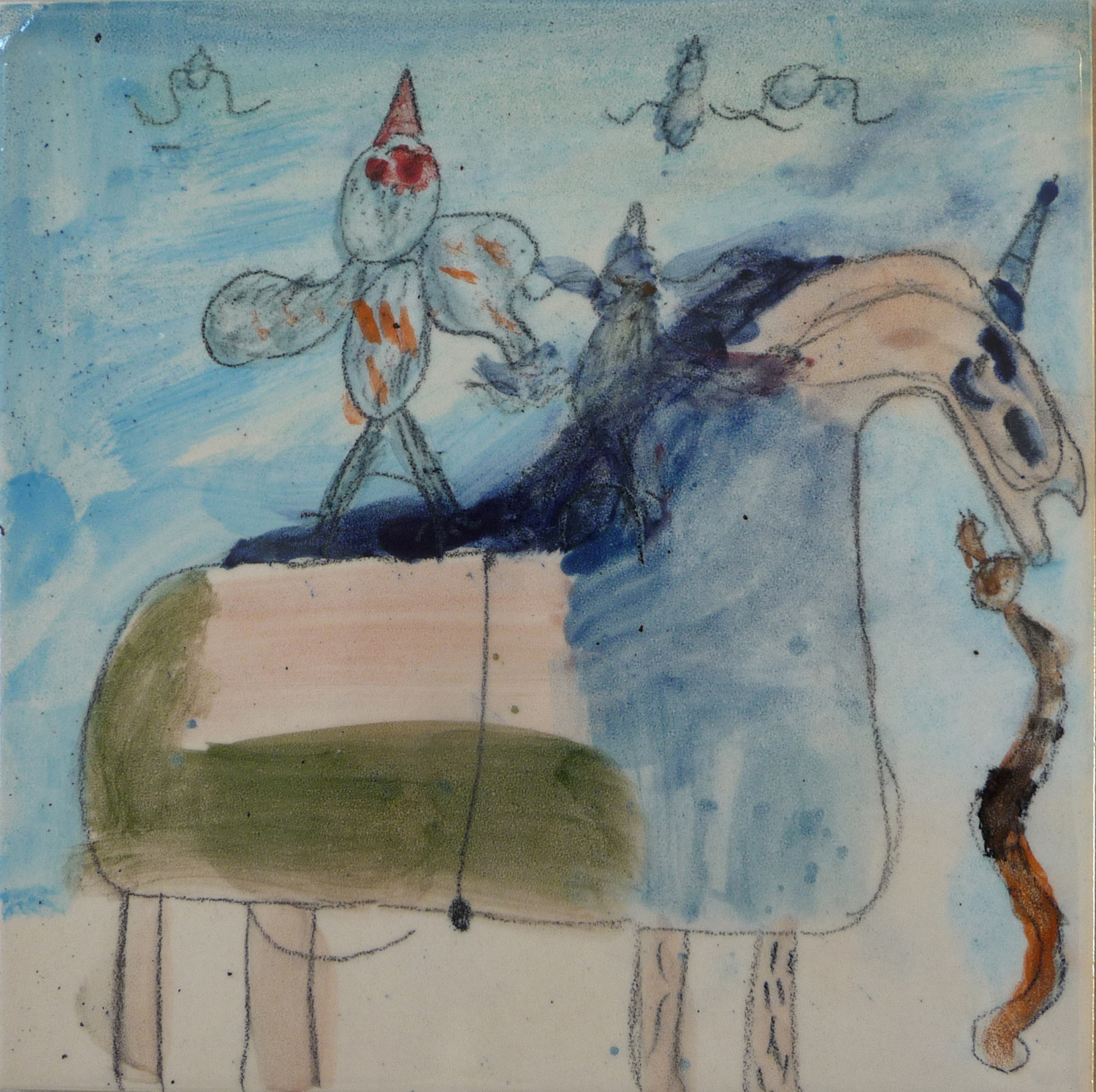
Angels accompany us throughout the year and in every conceivable situation: They are a symbol of human spirituality and, depending on the situation, we also refer to fellow human beings as saving angels, guardian angels, etc. The concept of angels is therefore still deeply rooted in everyday life, which is why the special needs pupils at Levana School in Eisleben took a colorful and cheerful look at this topic. This resulted in very different, cheerful, very unconventionally painted angel figures that will not only fulfill their purpose at Christmas time. The pupils painted on ceramics with special pens and paints.
Artistic direction: Katrin Röder
Thomas-Müntzer-Gymnasium, Halle (Saale)
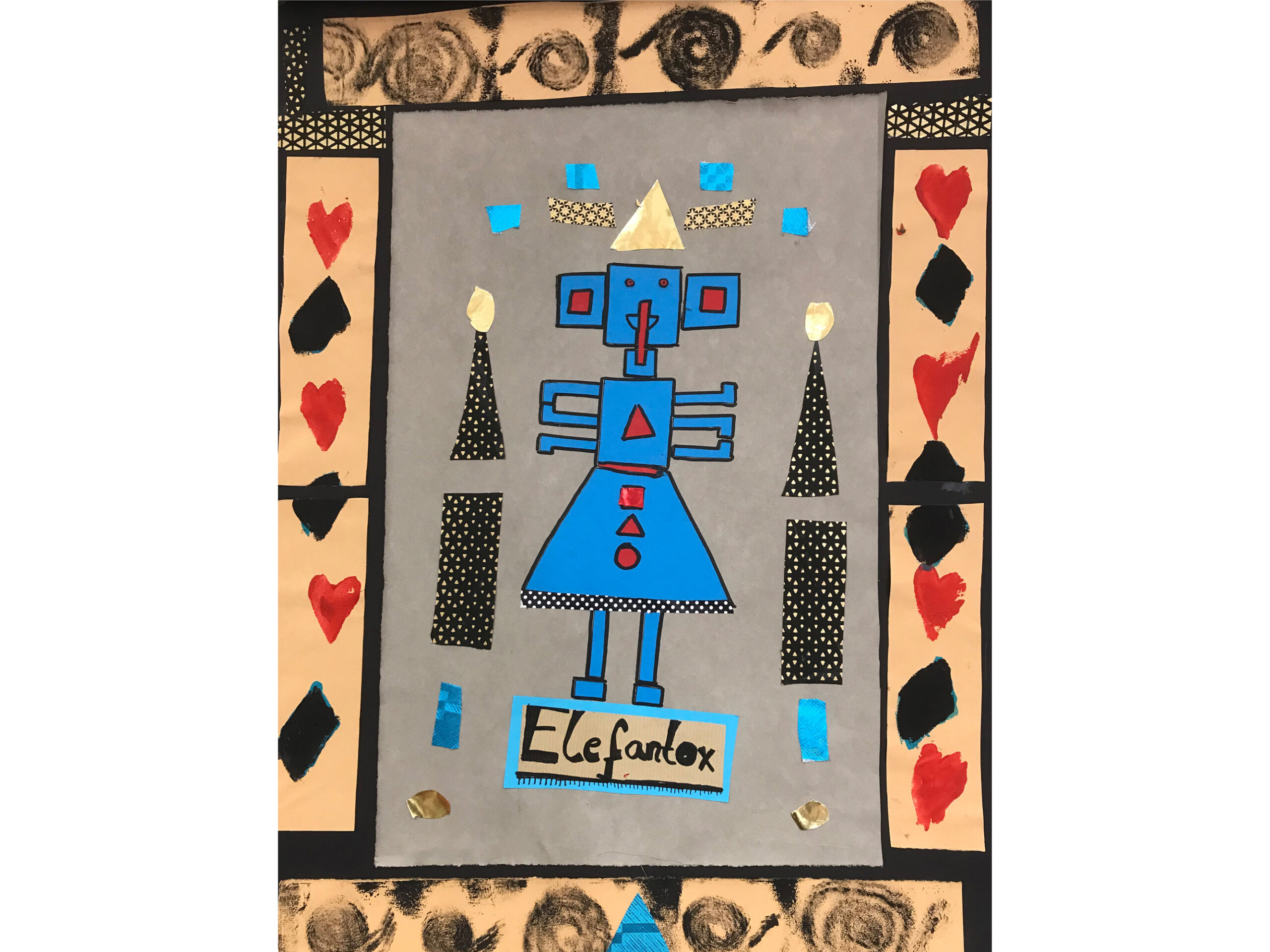
“Drawing on the power of signs, symbols and patterns”: A visit to the Ethnological Museum in Leipzig, the State Museum of Prehistory in Halle and the Halle District Court inspired the pupils right at the start of the project week. Every child should develop an animal deity. First in a sketch, then cut out of colored cardboard paper, a collage was created in several steps, framed by printed spiral patterns made of wool and threads and ornaments made of potato stamps. Simple geometric shapes were used to create the background of colored wrapping paper and then each deity was given a name of their own devising, which usually referred to the animal, e.g. Kuhlumbus.
Artistic direction: Ute Scheffler
Halberstadt Protestant Primary School
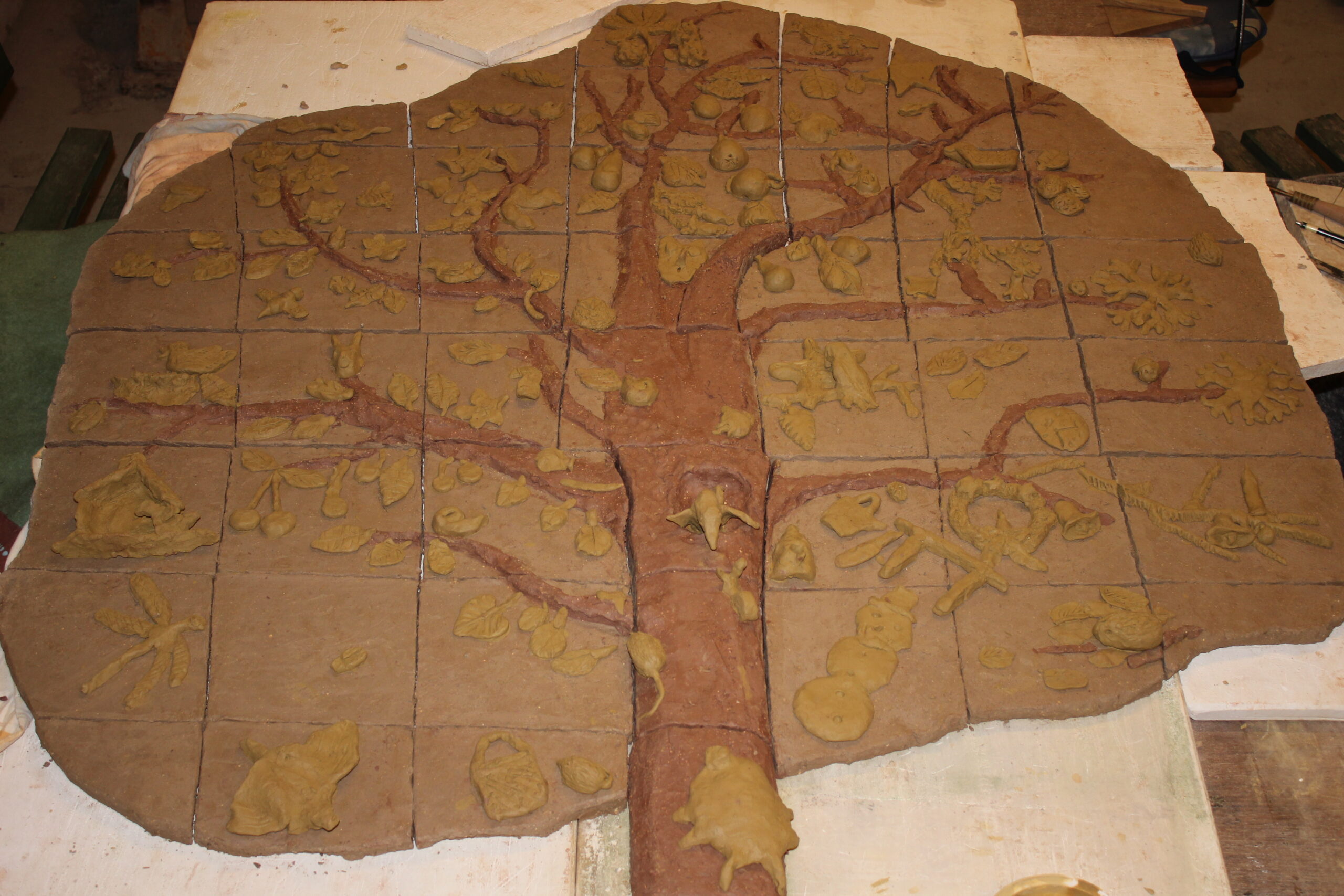
“Four Seasons”: The aim of Ute Scheffler’s project was to design a larger ceramic wall piece for her school through collaborative, creative work by the children in Year 4. On a base area in the shape of a tree measuring approx. 1.00 m by 1.20 m, all the children worked together to develop their ideas for depicting the four seasons. Many small creatures and shapes were created from clay, which the children imagined cavorting in and around the tree. The branches of the tree were designed with a different colored clay on the ceramic surface, whereby the difference in color helped to recognize the lines and shapes and the children’s small sculptures made of yellowish clay stood out better. Then the small objects were given their place on the large tree plate, whereby scale did not play a role. Finally, the entire surface was divided into individual tiles for drying and firing based on the lines of the tree.
Artistic direction: Monika Thoms
Karl Marx” secondary school, Gardelegen
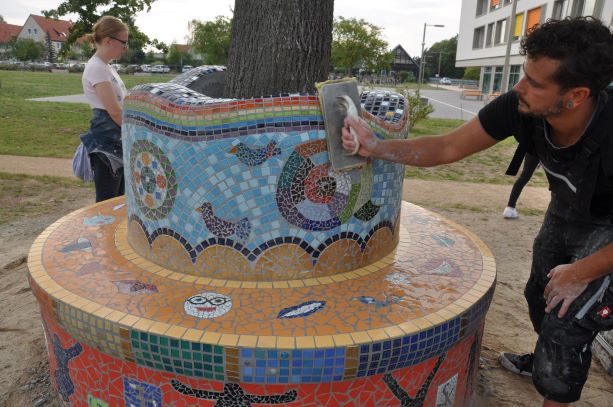
As the third mosaic project at the “Karl Marx” secondary school in Gardelegen, the task this time was to create a three-dimensional object in the outdoor area. The design for a bench with a mosaic surface by art teacher Ms. Ritzmann was technically implemented by Sven Strauss, the head of the mosaic working group. Monika Thoms, a freelance artist from the region, was involved in the implementation of the idea and provided practical support to the group of eleven pupils from grades 6 to 10 and documented the project. Over the course of five days, the individual picture pieces were laid in tiles and glass mosaic stones in the school’s art room and applied to a concrete bench prefabricated by the local concrete factory around a tree in the schoolyard. On the last day, only a few more areas were laid and finally the joint work was grouted.
Artistic direction: Silke Trekel
Salzmünde elementary school
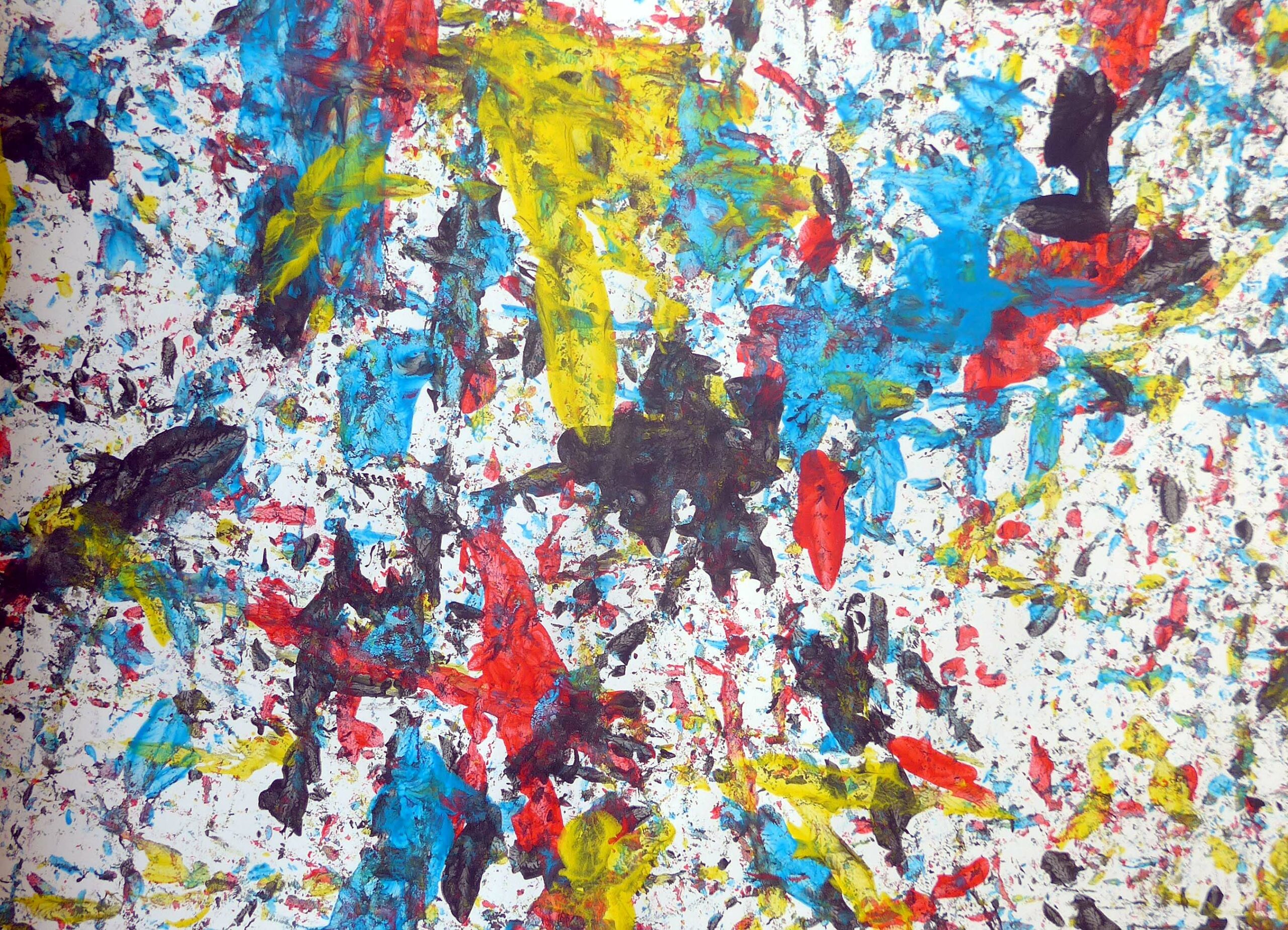
“Dice pictures” with an open-ended outcome were the theme of this year’s school project at Salzmünde elementary school. Using various techniques, colors and shapes were mixed up seemingly at random to create magical creatures. The aim of the project was to allow the unpredictable and to develop independent artistic works from the experimental design results. The many colored sheets were compiled in a self-made book.
Artistic direction: Klaus-Dieter Ullrich
Reinhard Lakomy” special school, Halberstadt
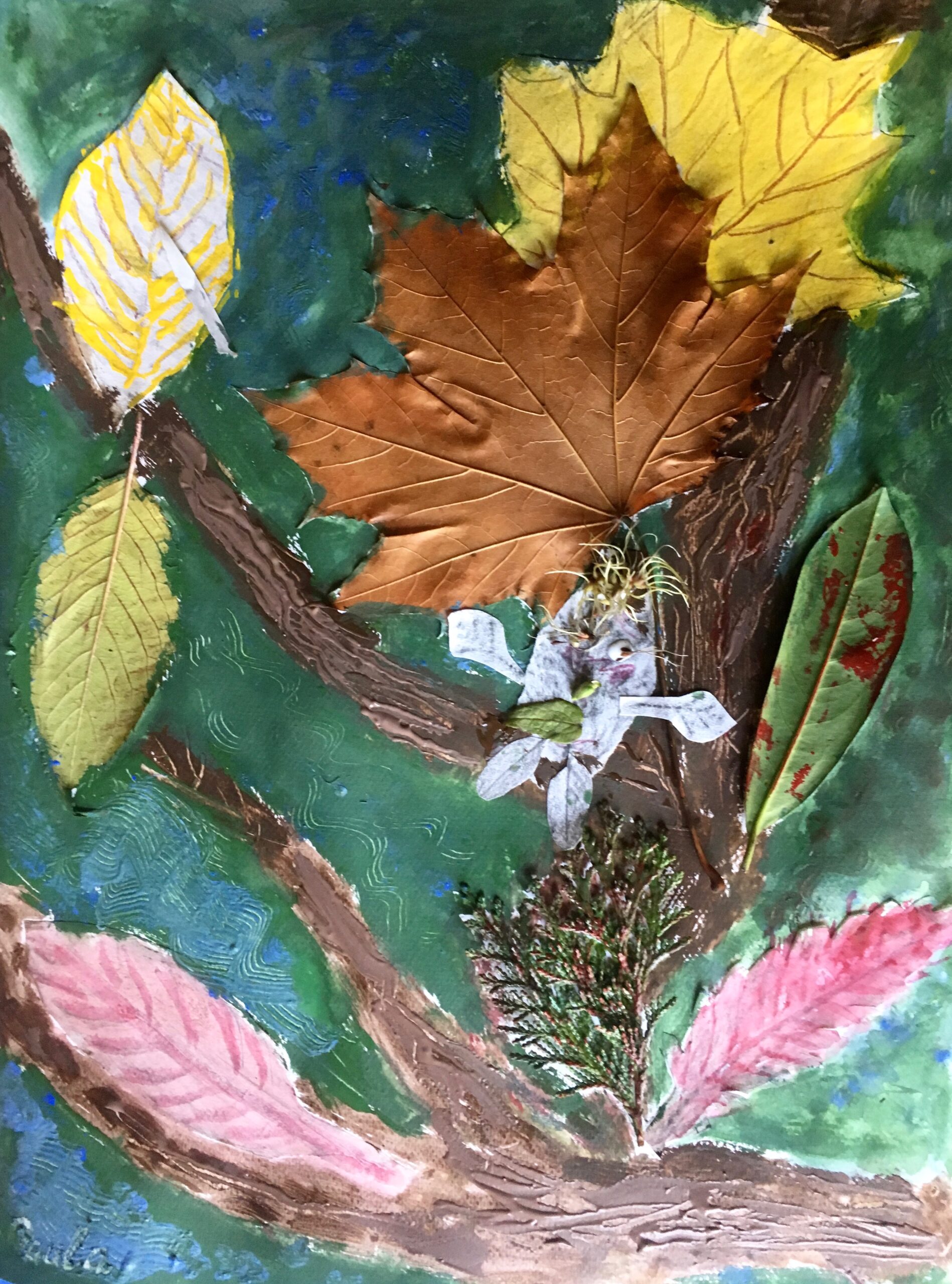
The “Troll Forest” was the thematic starting point for the project at the “Reinhard Lakomy” special school in Halberstadt with two 8th grade classes. The entire spectrum of painterly and graphic techniques was used. Rosemarie Ullrich took on the sculptural part, Klaus-Dieter Ullrich the painterly approach to the theme. Found materials such as small twigs and leaves were used for collages, which were then further treated in painting. But pastel, watercolor and drawing were also used. The main aim was to make it possible for everyone to enjoy an exciting and varied work experience, regardless of their limitations. The children showed a special degree of intensive and very personal involvement, with some even displaying pronounced talent.
Artistic direction: Rosemarie Ullrich
Reinhard Lakomy” special school, Halberstadt
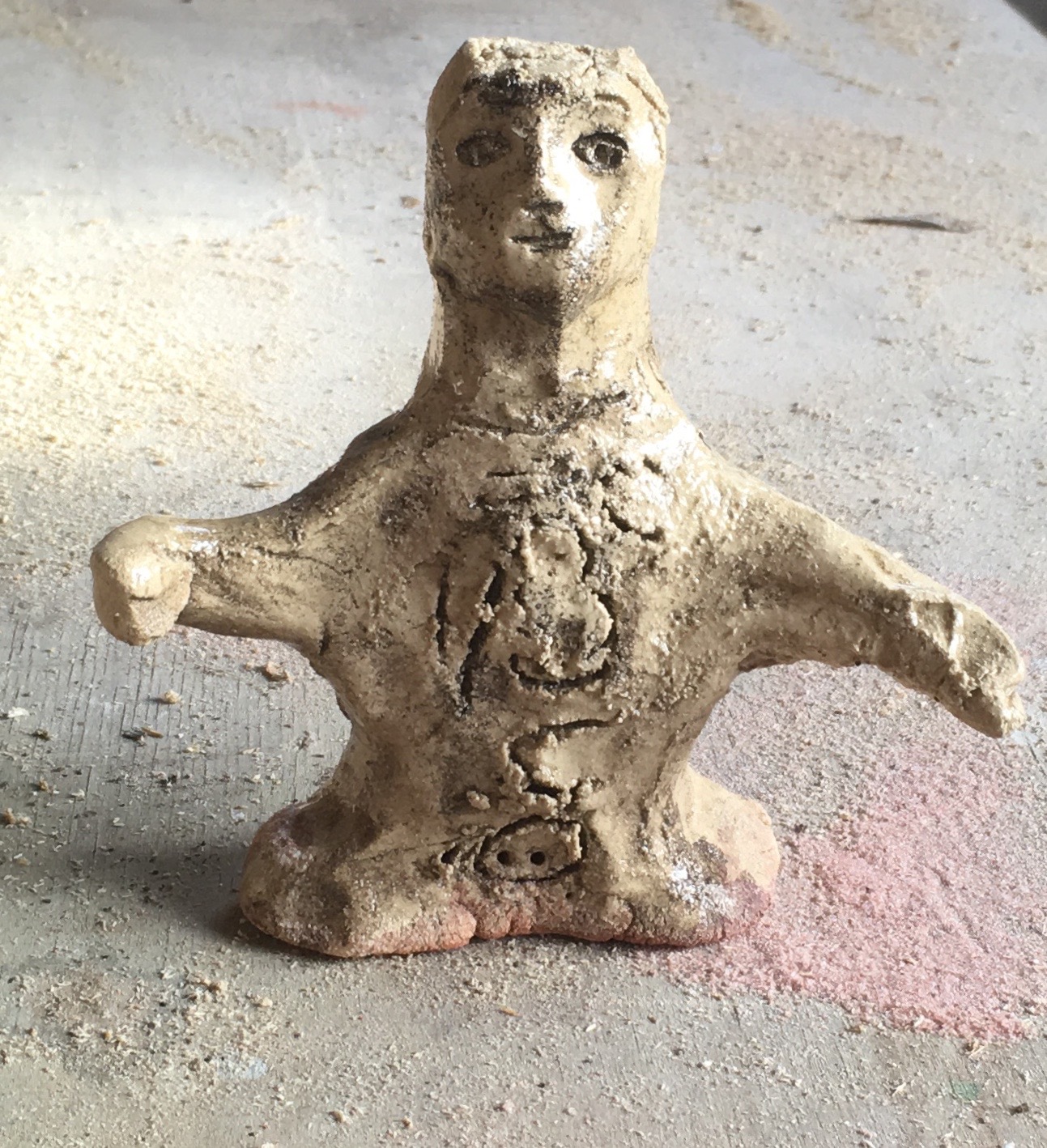
“Forest and Tree and Little People”: An artist and an artist jointly led these projects for two 8th grade classes at the “Reinhard Lakomy” special school. Klaus-Dieter Ullrich was responsible for the painterly-graphic part and Rosemarie Ullrich for the sculptural part. The starting point was a real forest, called the “Troll Forest”. Stories about the “legendary” life in the forest were added in pictures and text. Rosemarie Ullrich worked with the pupils during the project with clay. This resulted in ceramic reliefs and small ceramic figures, colored with engobes and glazes, which were exhibited in the school after the firing.
Artistic direction: Pauline Ullrich
Beesenstedt elementary school
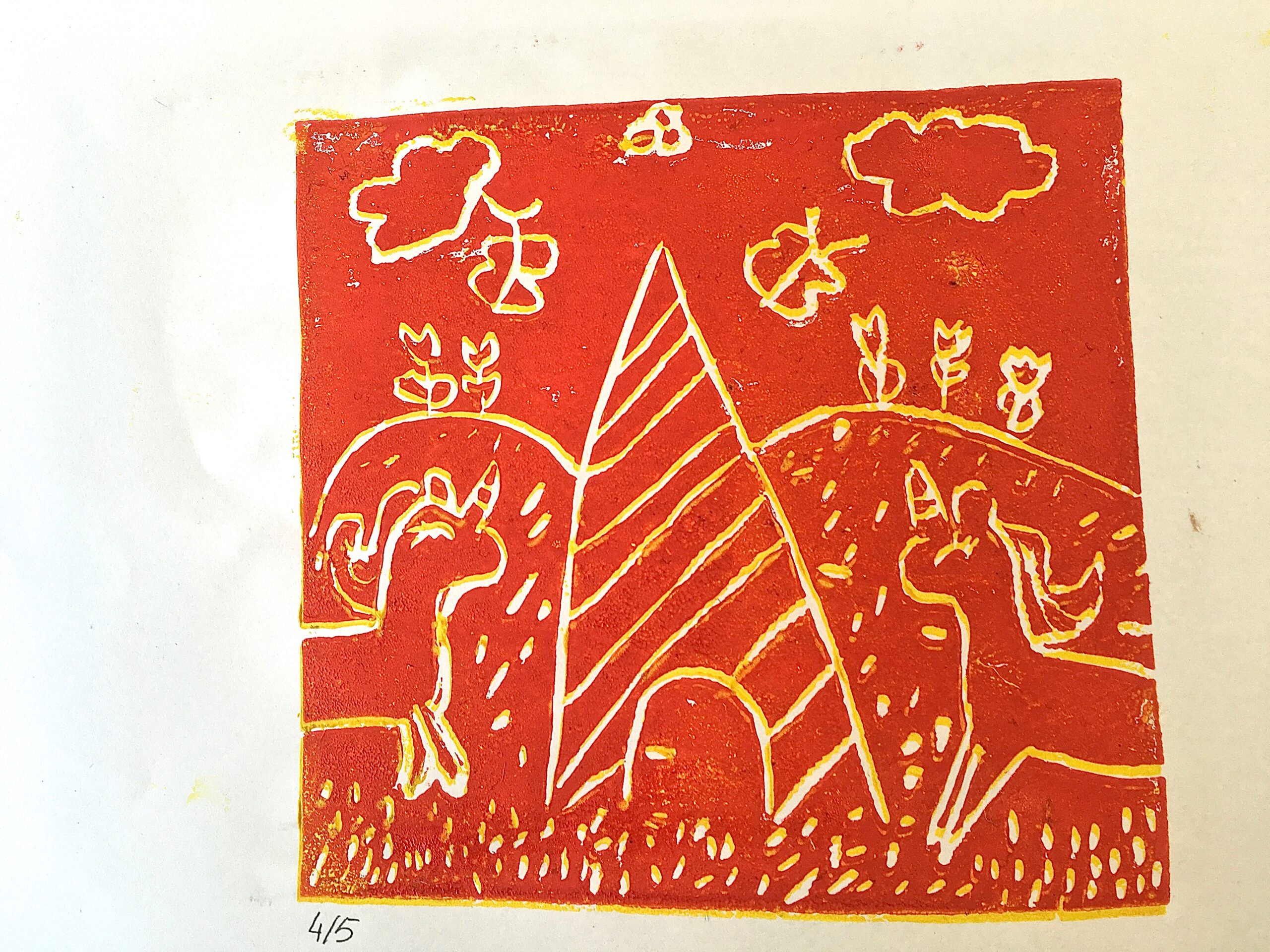
“Racing snail and enchanted forest, childlike empress, labyrinth and ivory tower – news from Fantasia’s world”: In 2019, the school project at Beesenstedt elementary school focused on Michael Ende’s “Neverending Story”. The artistic technique of the linocut made it possible to emphasize the particularity of the child’s expression and to give it a creative form with printing inks on paper. From reading the story aloud and sketching in parallel, we moved on to the designs for the linocuts, cutting the linocut plates, printing with black ink and printing with two colors (offset printing). This art project at the school gave Year 3 pupils the opportunity to “take time out” to dream, to engage intensively with children’s literature and to realize it artistically.
Artistic direction: Grit Wendelberger
Vocational schools Anhalt-Bitterfeld, Köthen
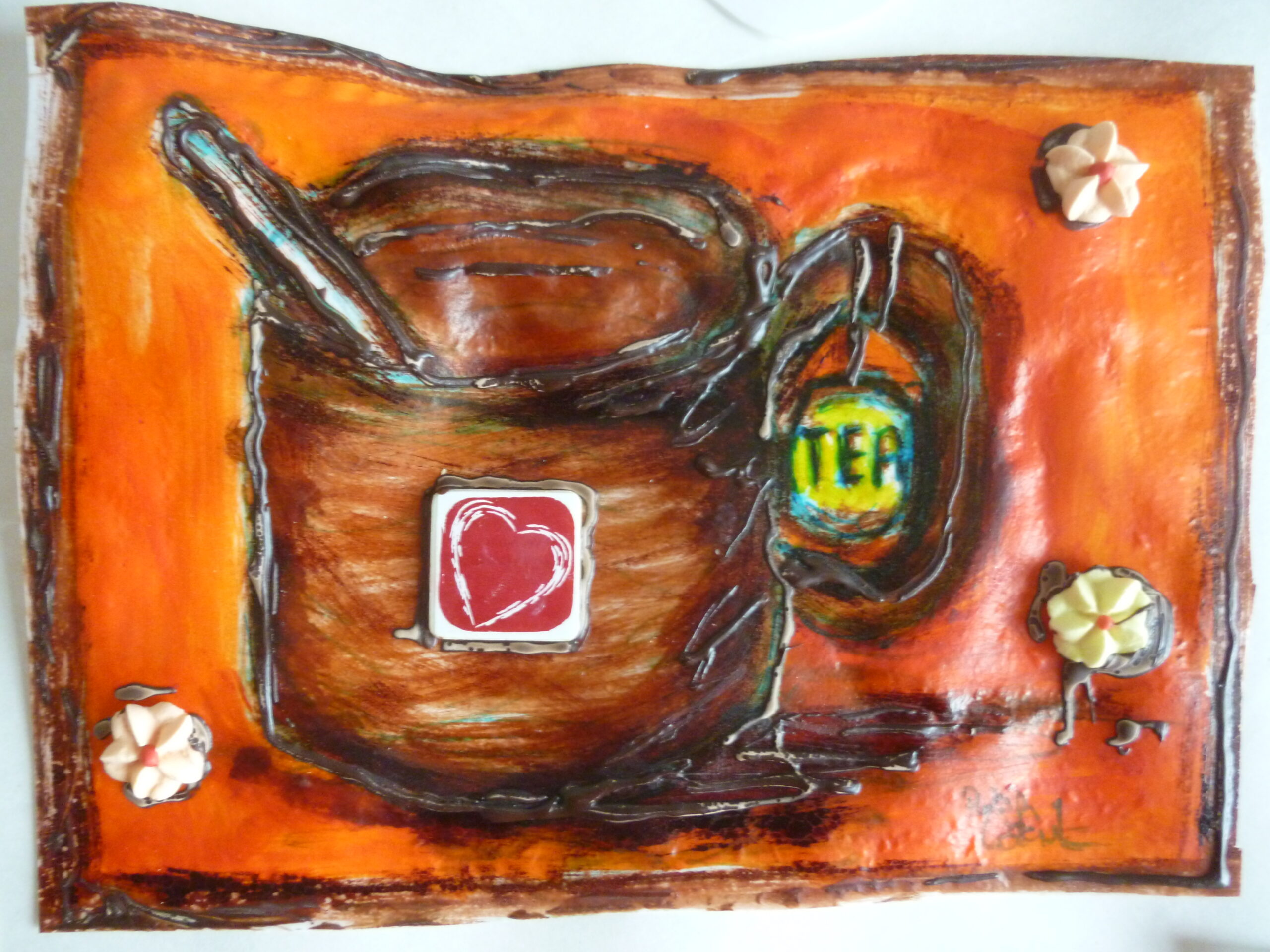
“Designing with chocolate”
During the two-day workshop “Designing with chocolate” at the vocational school in Köthen, 15 students aged 18 explored the versatile material chocolate for the first time, both graphically and sculpturally. A foray into various design methods began, all of which can also be applied to other materials. While the first day was devoted to the basics of artistic creation and flat work, the second day was devoted to “sculptures for non-sculptors”: standardized chocolate Santas were to be individualized and then worked on graphically. Various formats were created: Stories and comics, individual scenes and sculptures. The students worked in groups or alone and created Eat Art with chocolate and food coloring on the one hand and with graphic material on the other during this art project
Artistic direction: Ines Zimmermann
Georg-Cantor-Gymnasium, Halle (Saale)
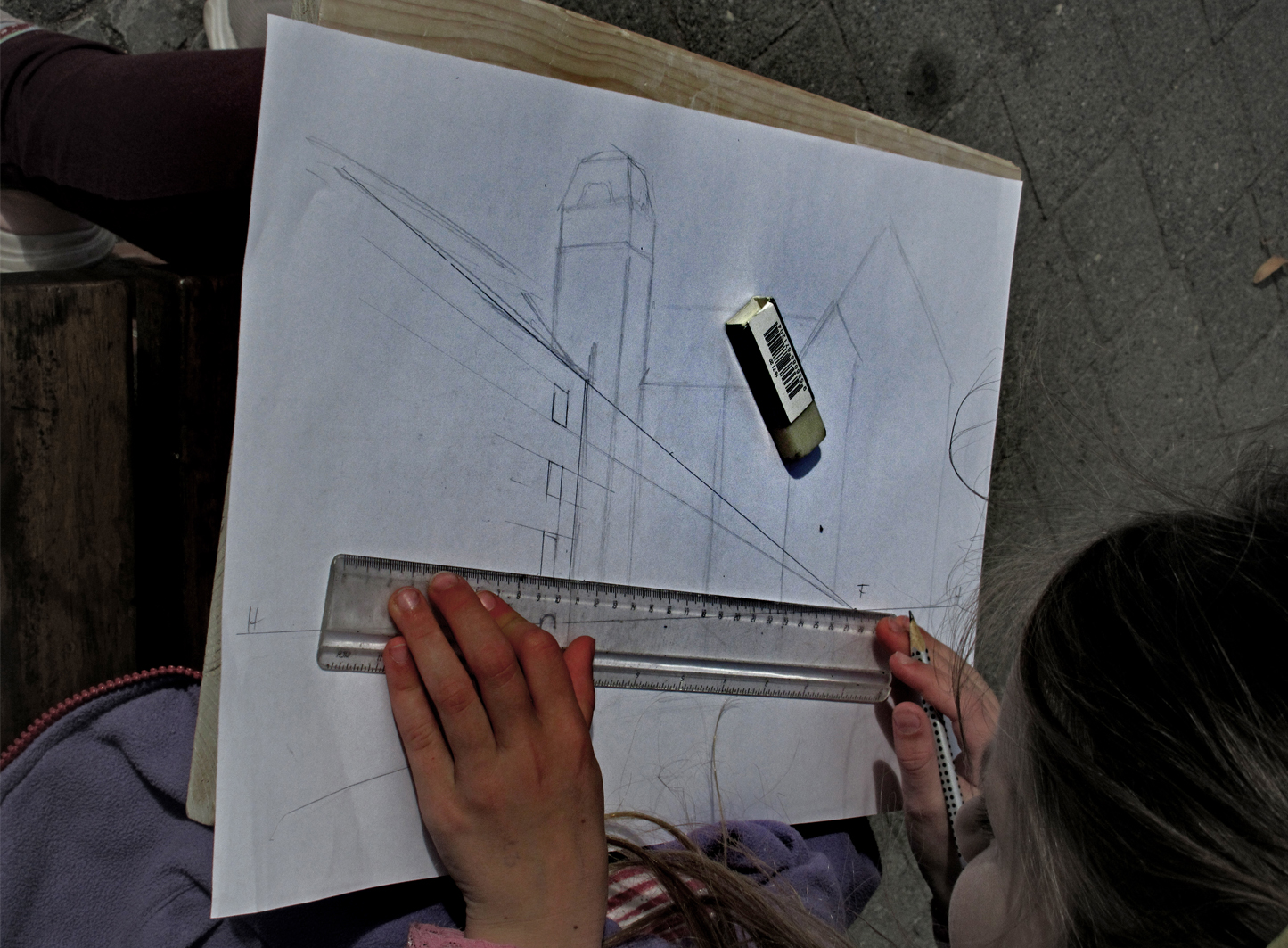
“Architectural Drawing”: The art project at Georg-Cantor-Gymnasium was realized as part of an art club and had the theme “Architectural Drawing”. First, the pupils were given an introduction to the topic of perspective. The frontal and oblique perspectives were discussed. The perspective construction was then drawn on site. The pupils were then familiarized with drawing in charcoal and pastel so that they could breathe life into the pictures.
